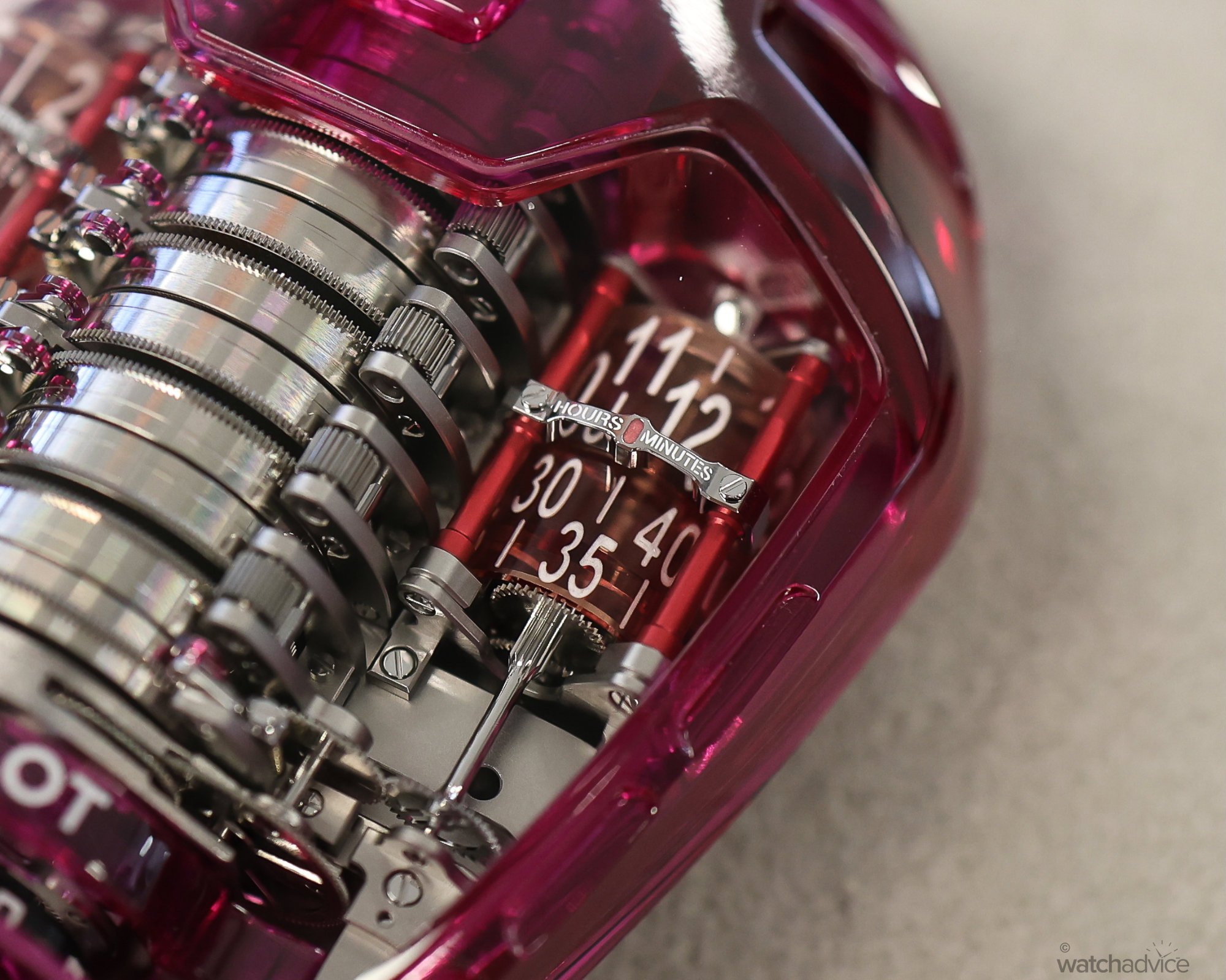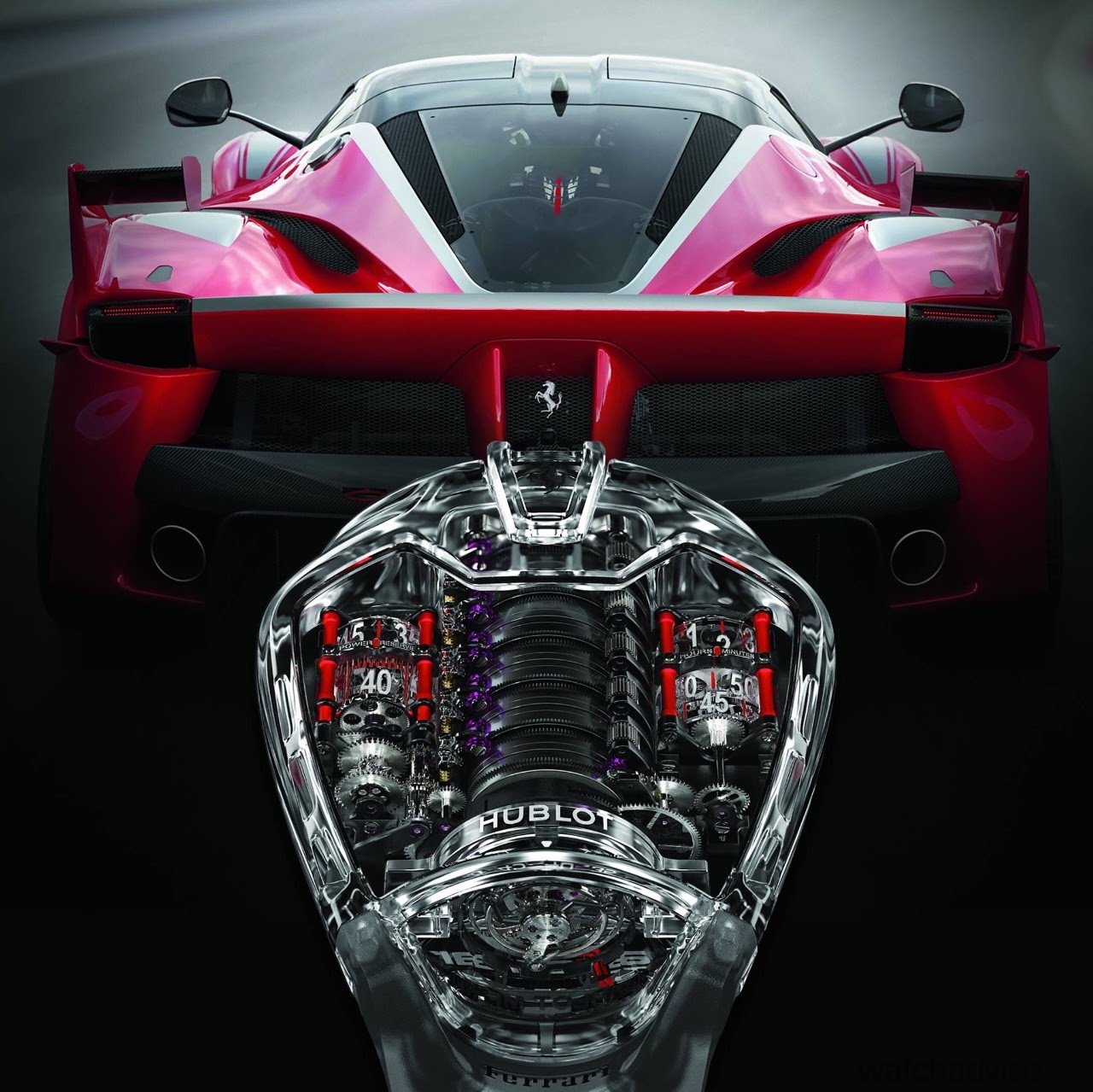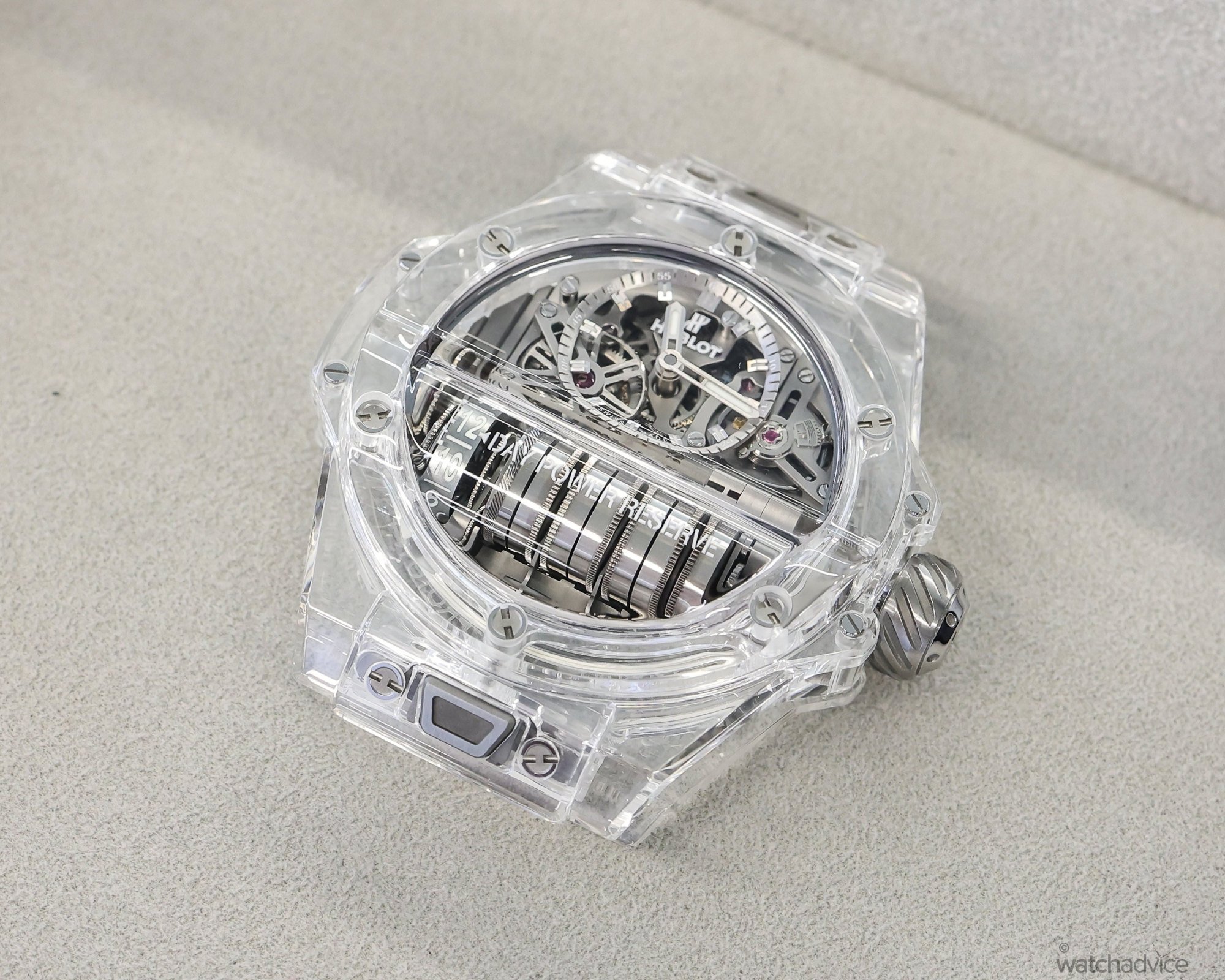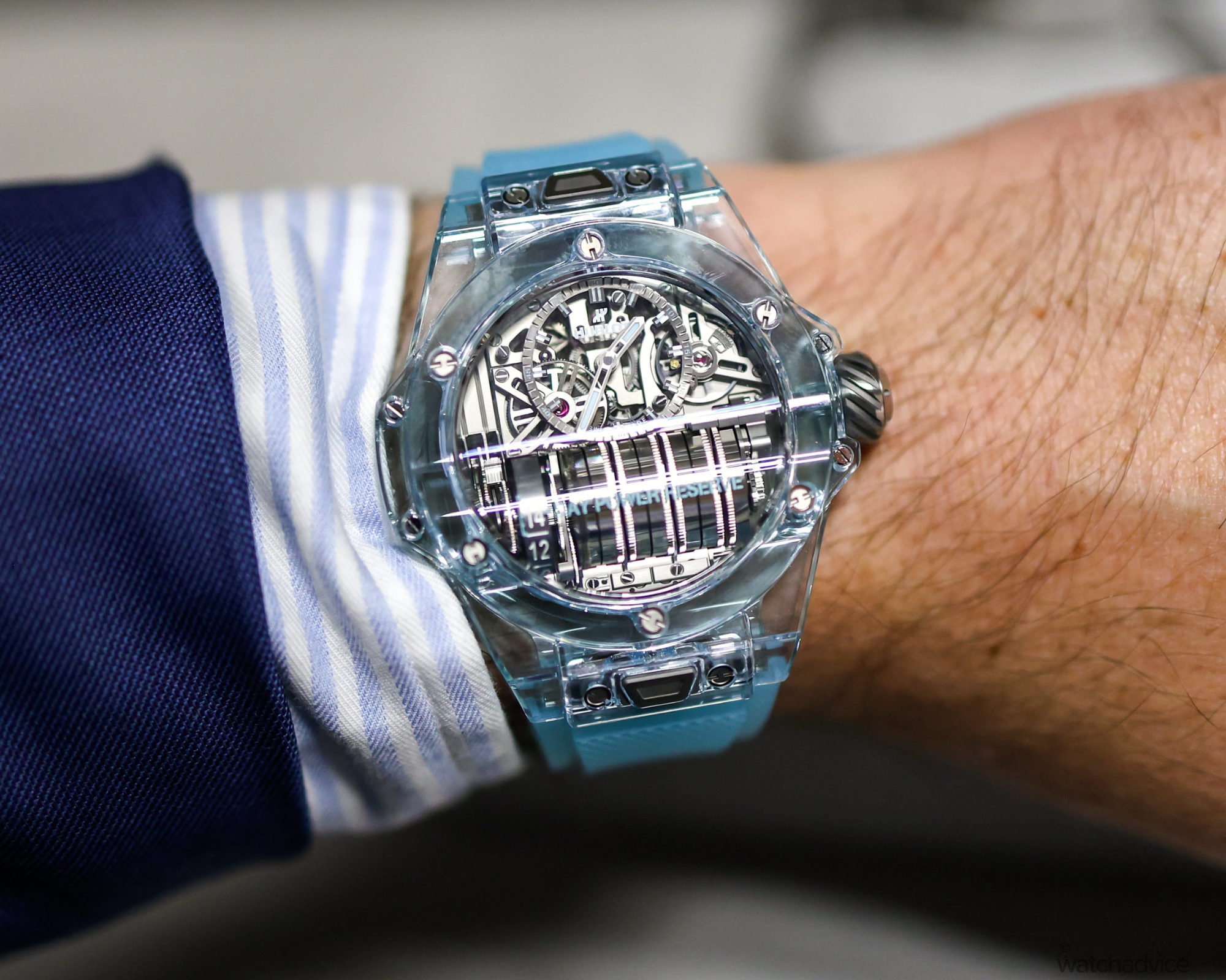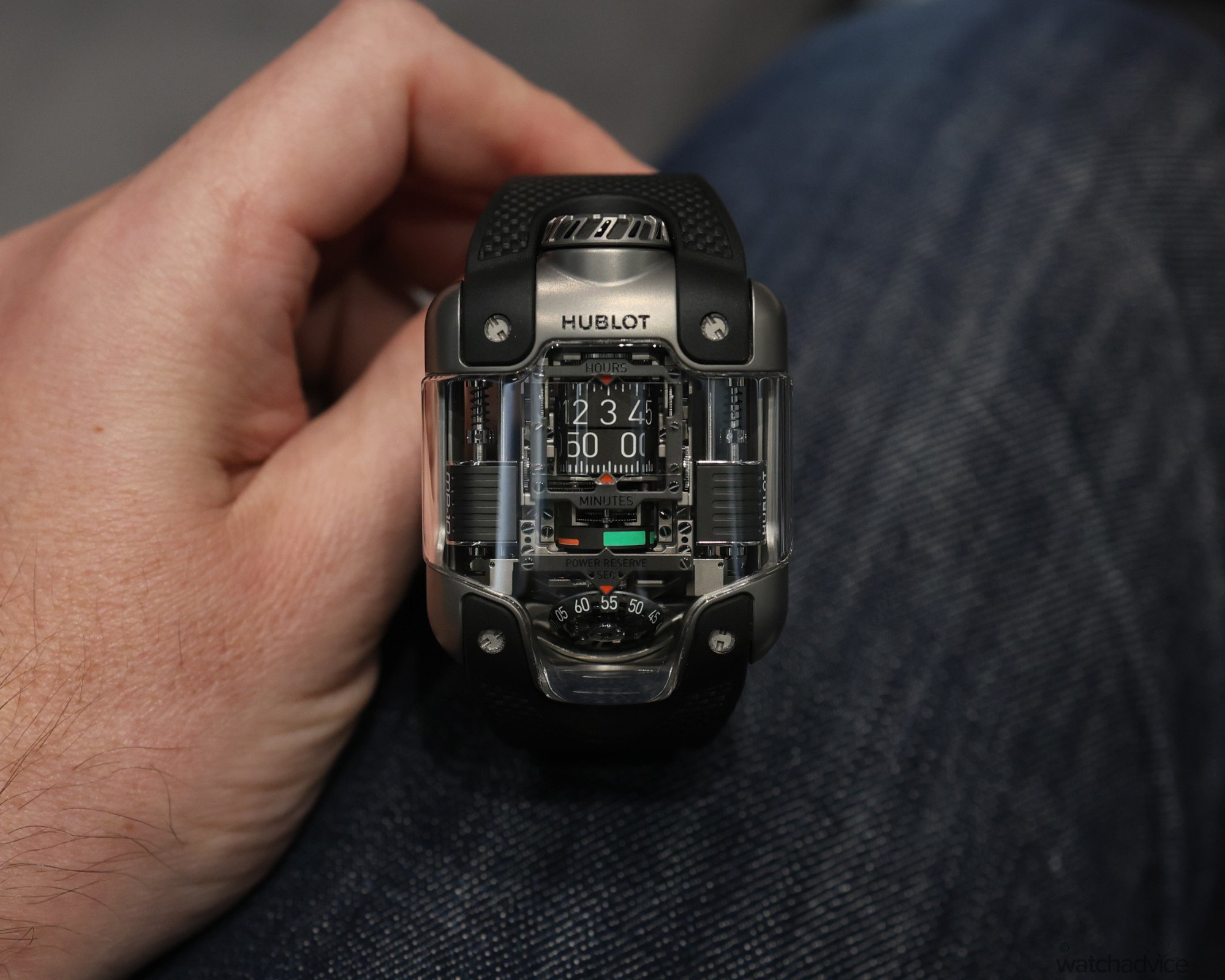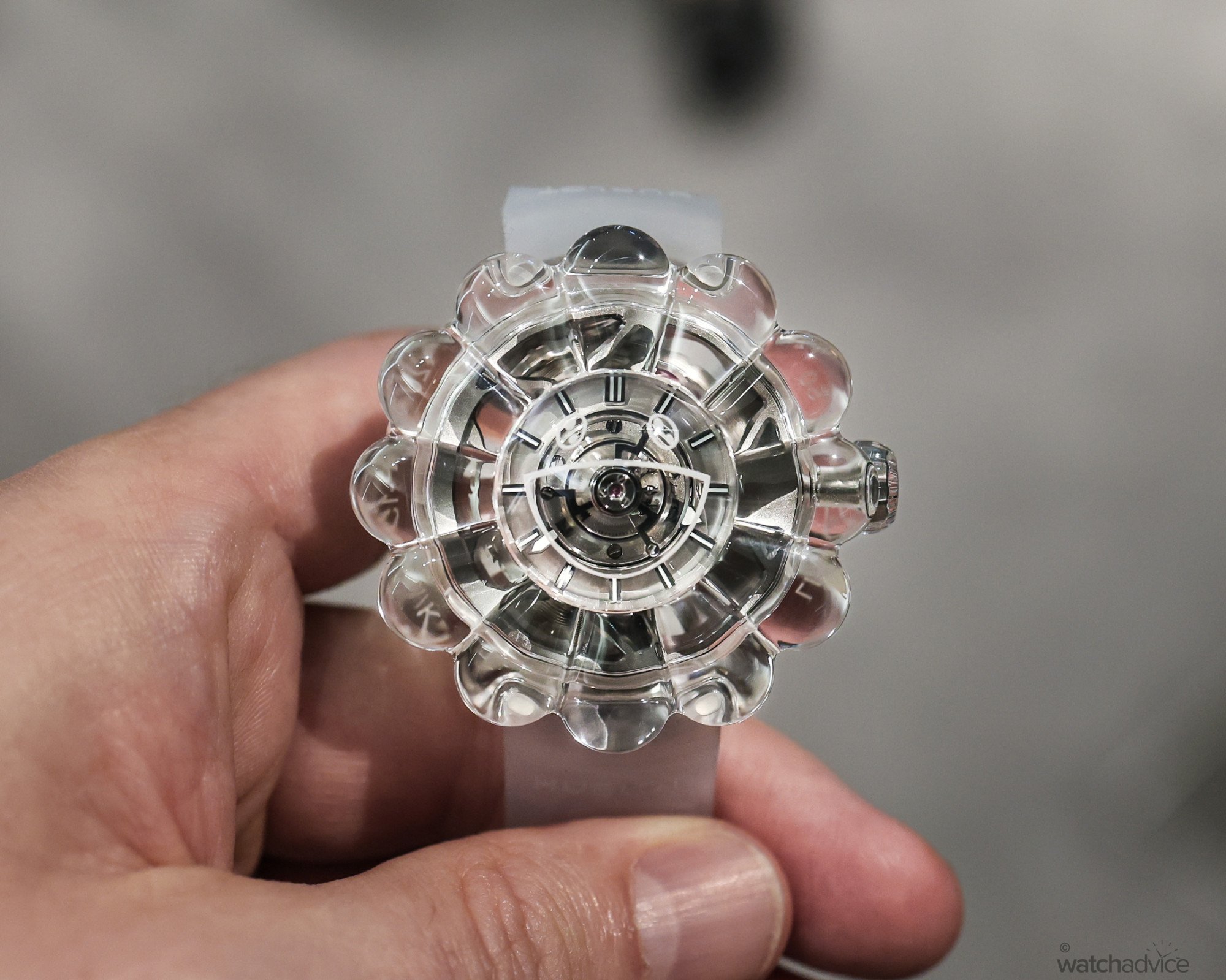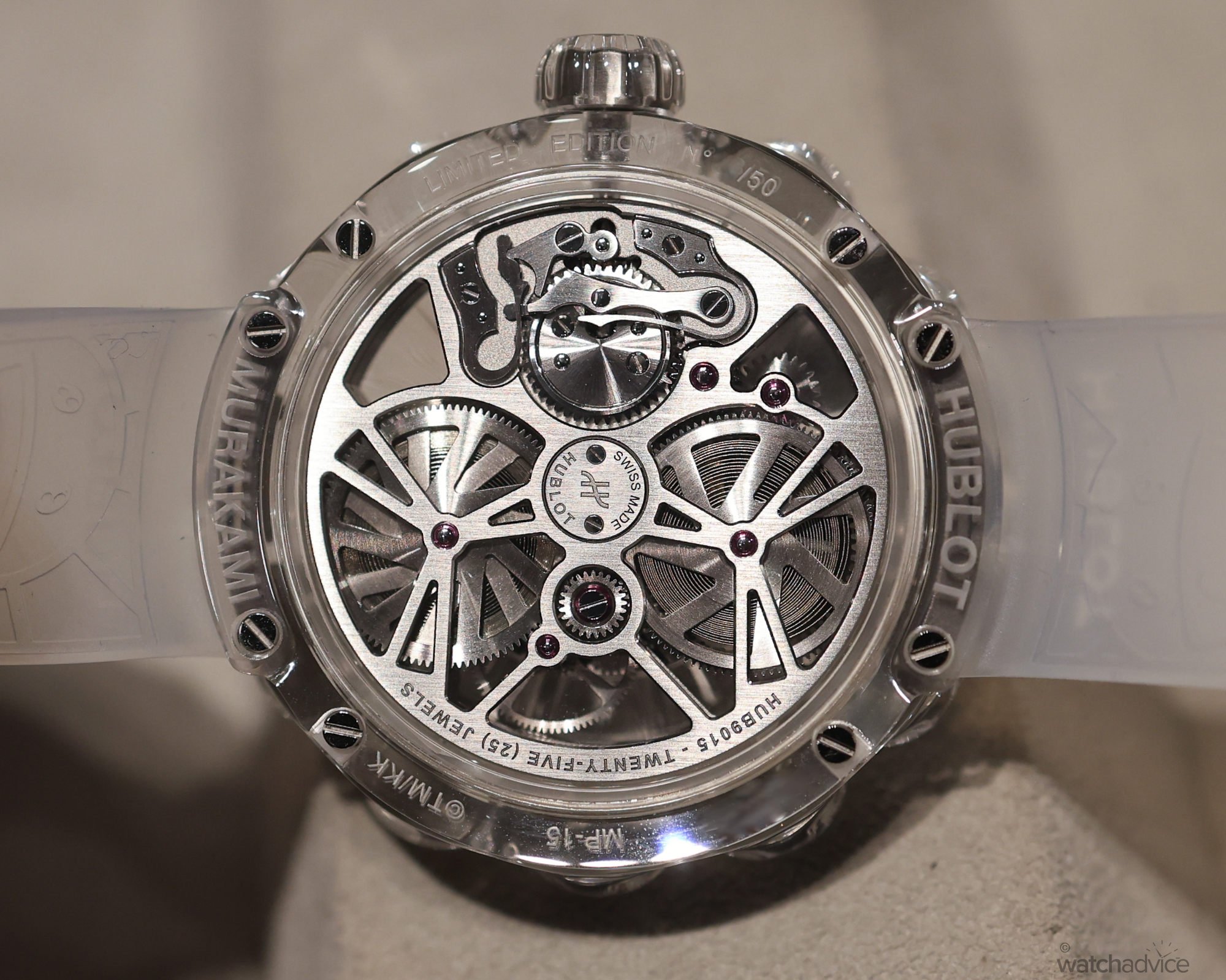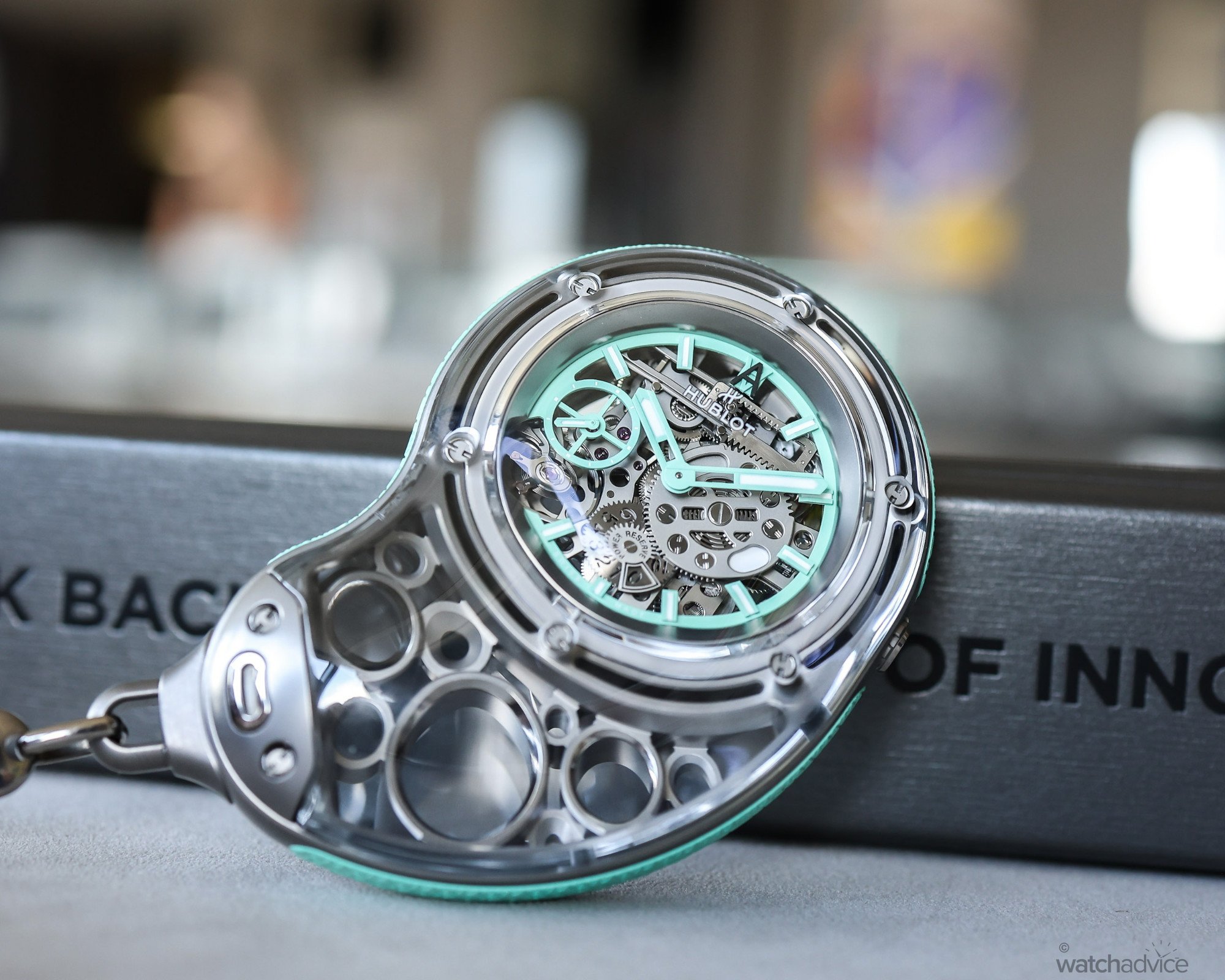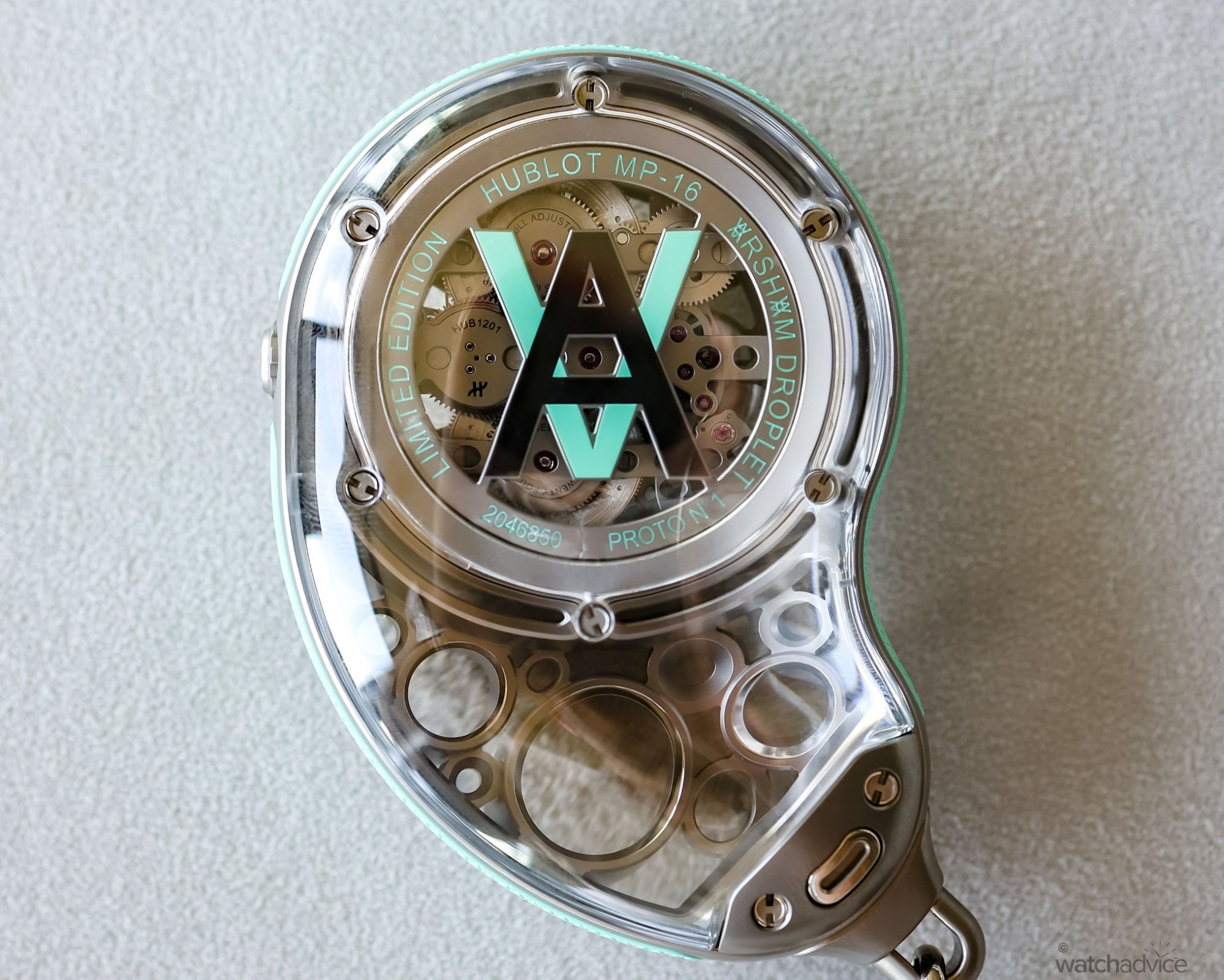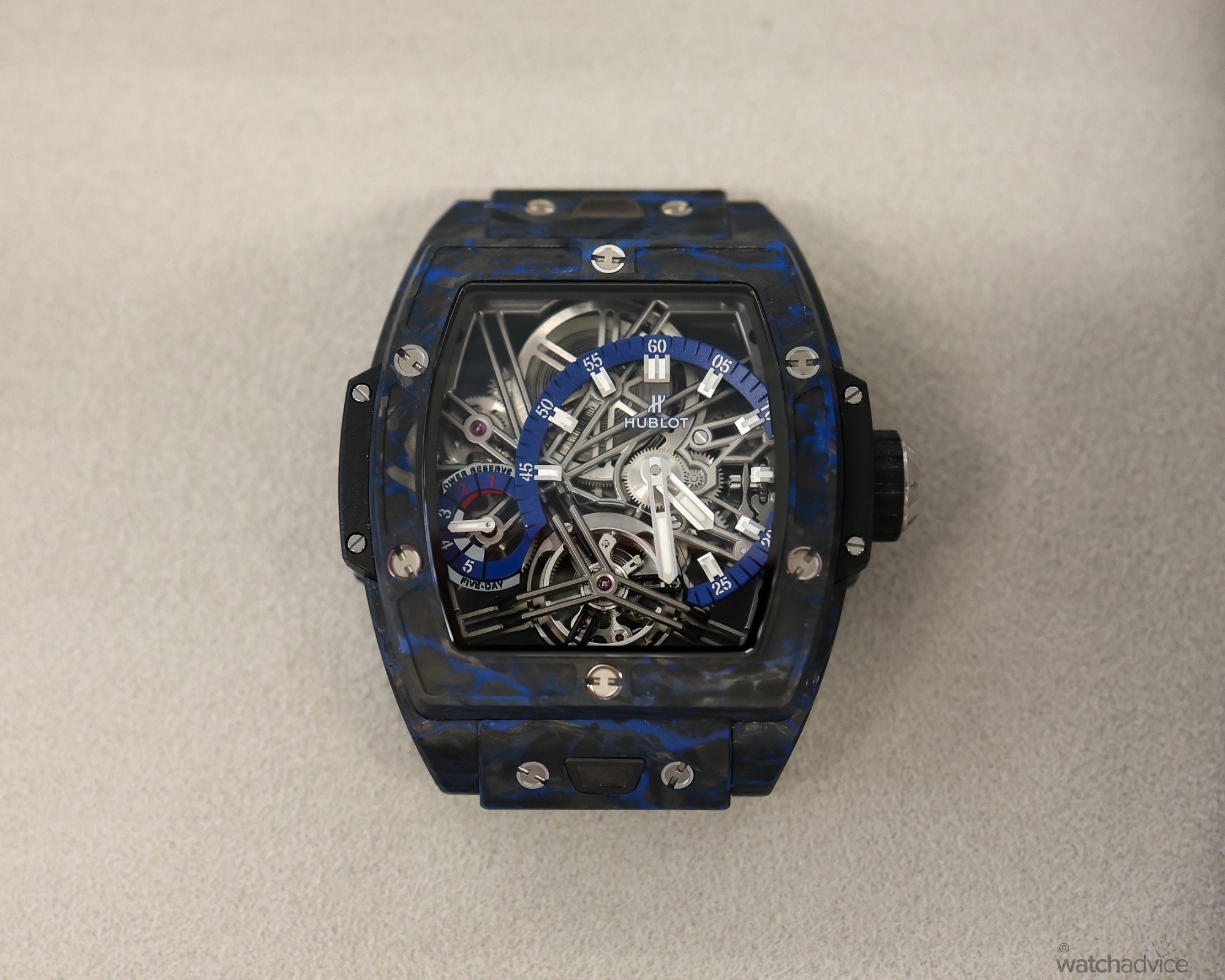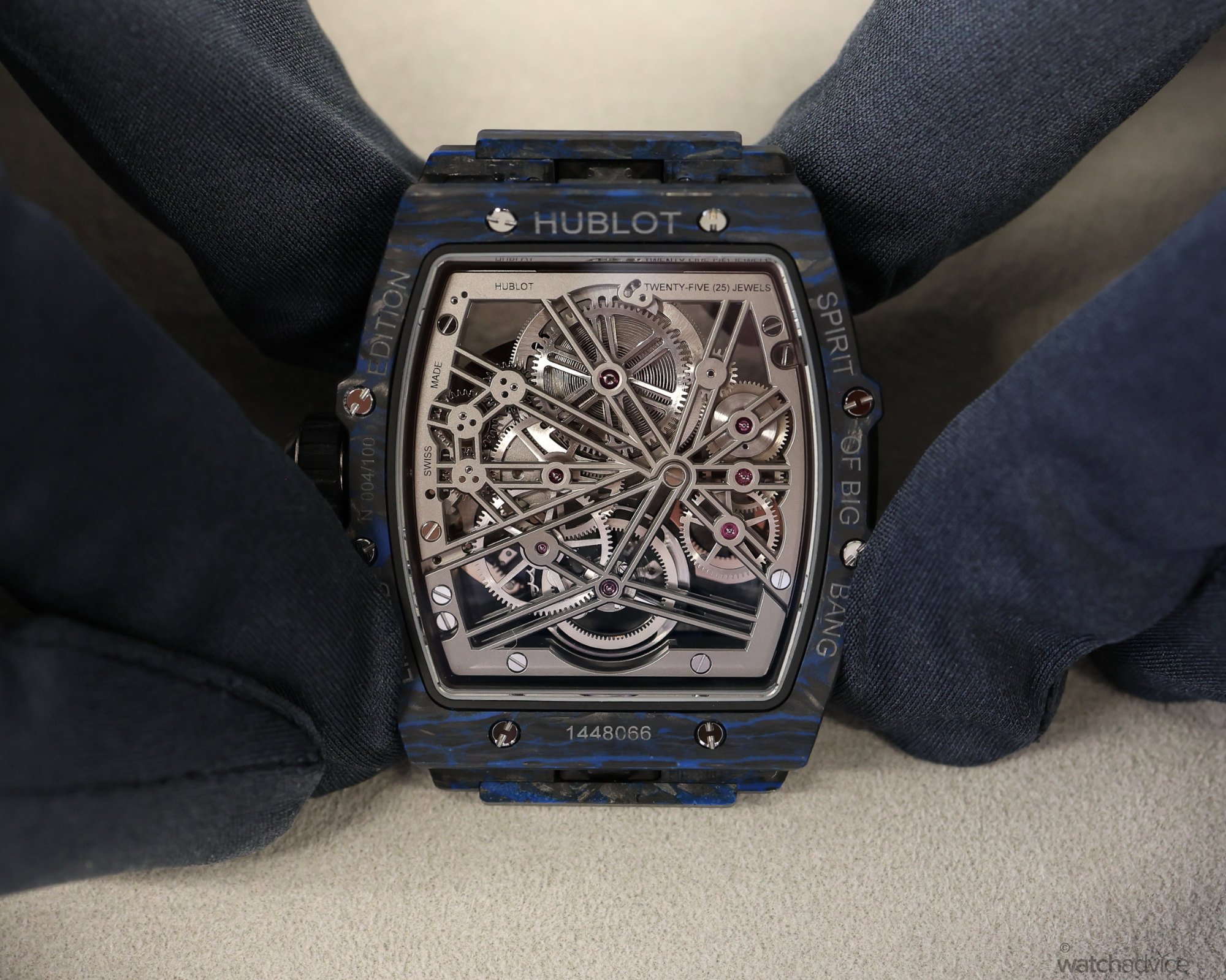Hublot isn’t afraid to push boundaries, and no better example of this is their Manufacture Pieces, or MP’s as they are widely known. In this article, we’re looking back at some of the groundbreaking pieces to come out of the Nyon Manufacture and why these put Hublot in another realm.
Here at Watch Advice, we’re pretty fortunate to see a lot of watches, like a lot! Thankfully we love watches, so it’s by no means an arduous task, but one pitfall of seeing the number of watches we do, and I’m sure that others who are in the watch industry will attest to is, that there are so many great pieces out there, trying to find standouts gets harder and harder each year. So, it takes a lot to stand out from the crowd, and as a watch enthusiast, you start to look for things that are different, watches that break with convention and are not afraid to push the boundaries. There are a few brands that do this regularly, but perhaps none more than Hublot.
We’ve written a lot about Hublot this year for several reasons. Full disclosure, we do have a commercial partnership with them, so this is one reason, however, what this has allowed us to do is delve into a brand that several of us here in the office love, and have done for a long time. Without this partnership, we would never have had the chance to visit the Hublot Manufacture in Nyon and would not have been able to have effectively unfettered access to how they make their watches and movements and speak with those people who work on these every single day. I can say I’ve learned so much more about the brand over 2024 to the point that it’s rekindled those feelings I had about the brand over 10 years ago and given me a newfound appreciation for what they do, and why! Because of this, and this leads me to my next reason for writing about Hublot, we feel the watch community needs to understand the brand a lot more and learn more about the way they craft their ceramics and sapphire materials, the effort they go to to make their in-house movements and of course, their Manufacture Pieces, or as some people say, Masterpieces, their MP collection.
There are many misconceptions and misinformation about Hublot that float around the watch world. Much of this is from armchair commentators who’ve never learned anything about the brand, nor have they stepped foot into a boutique. Just the other day in fact, I commented on an IG post with an “expert” calling the Hublot x Nespresso collaboration piece the worst collaboration in the industry, to which I politely corrected the information in the original video shared. To this, one brave soul retorted back to me saying I must have bought it – with a serious of laughing and facepalm emojis. I was nice about it and simply said the “expert” completely missed the point of the collaboration and that they should do some research on the topic before slinging the usual mud. To this, no response from the mudslinger, but a lot of likes on my original statement and rebuttal.
But this is the world we live in with social media, so the more we can research, fact-check and help educate people about watches in general, the better this crazy hobby and industry will be in my opinion. As the saying goes, a rising tide lifts all boats and why wouldn’t we want that? The healthier the industry is, the more collaborative the industry is, the more we all enjoy it. Ah, utopia! But, I digress…
RELATED READING: Is Hublot The Most Misunderstood Brand In The Industry?
Hublot’s Manufacture Pieces are important for the brand, as well as the industry. They showcase what is possible and one of the benefits Hublot has as a brand, that former CEO, now Honorary President Ricardo Guadalupe explained to me when I caught up with him earlier in the year, is their newness and lack of hundreds of years of history that can in some ways, hold a brand back. They are free to do what they want, and while other brands have historical models, brand and model DNA that can both help and hinder them, Hublot does not. The DNA of the brand is doing what others don’t, from the inception of the Hublot Classic Original Carlo Crocco came up with in 1980, pairing rubber with gold (how dare he!) to the strides Hublot made under industry legend, Jean-Claude Biver, through Ricardo Guadalupe’s tenure as CEO, the last 40 years has been about Hublot doing things the Hublot way, and along the way, partnering with creators to do so.
Some people would say, just because you can, doesn’t mean you should, but sometimes, I 100% believe that if you can, then you should. This is how innovation and progress happen, and Hublot is about innovation and progress. The MP collection is the manifestation of this in the form of watches that showcase what you can do if you think outside the box!
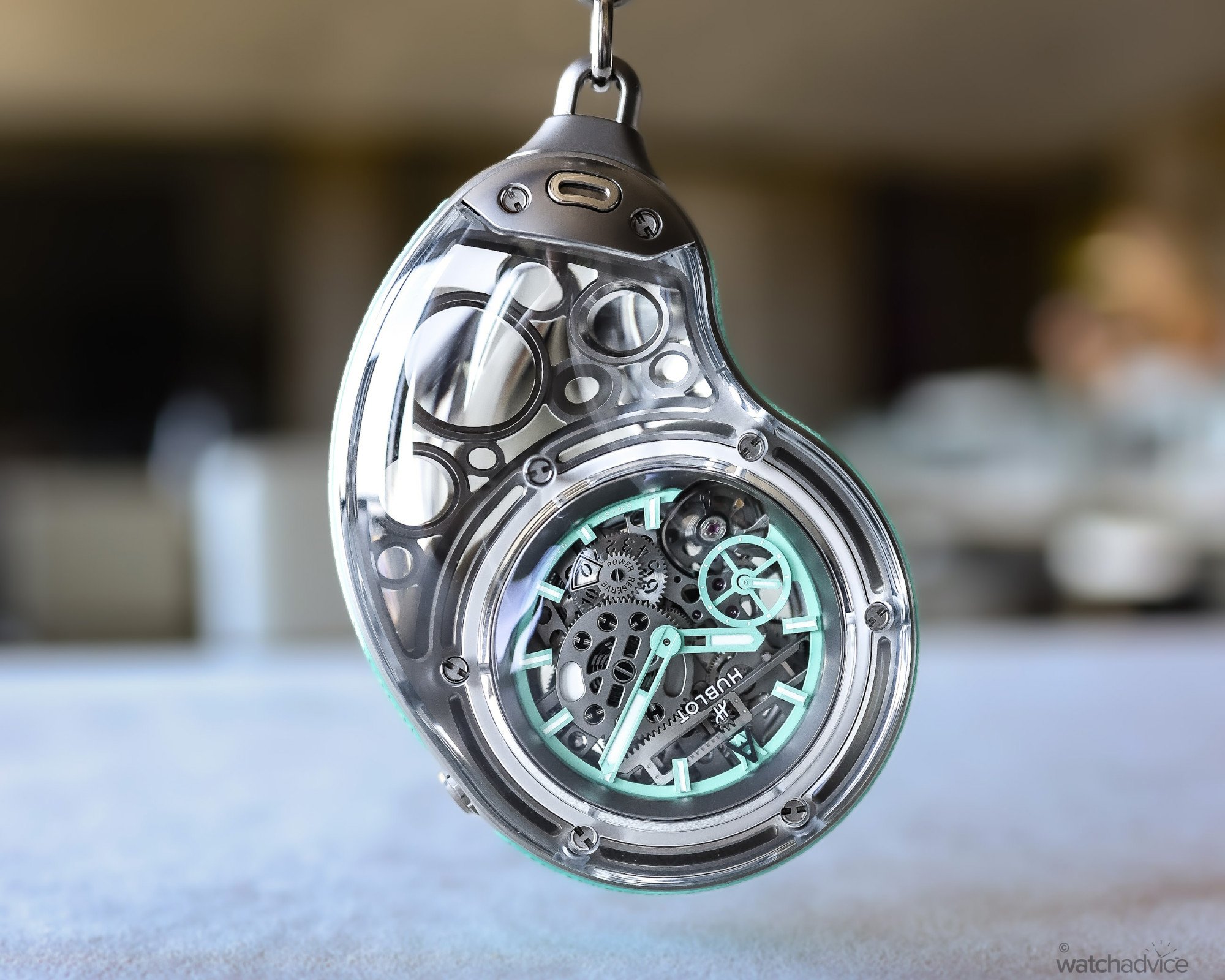
In this article, I, and the Watch Advice team, wanted to take you on a brief journey of the MP collection, highlighting some of their standout historical models, and the more recent models over the past few years that have taken this boundary-pushing to another level. For some of these pieces, we had to go to Geneva to see some of them in person, as this is the only place they exist outside of collectors’ homes, others, we had the opportunity to check them out first-hand here in Australia before finding a home.
Iconic Manufacture Pieces
What better place to start than the iconic pieces that many will know or be familiar with, and probably the best known is the MP-05 LaFerrari. The MP-05 LaFerrari is from 2013 and a piece that was designed in conjunction with the team at Ferrari, evident in the shape of the case and movement designed to be representative of the LaFerrari’s engine. The MP-05 houses a movement that has a 50-day power reserve, that’s 50 DAYS not hours! This set a world record at the time for a manually wound tourbillon wristwatch and was achieved by placing 11 barrels in succession to deliver this to the vertical tourbillon at the end of the piece.
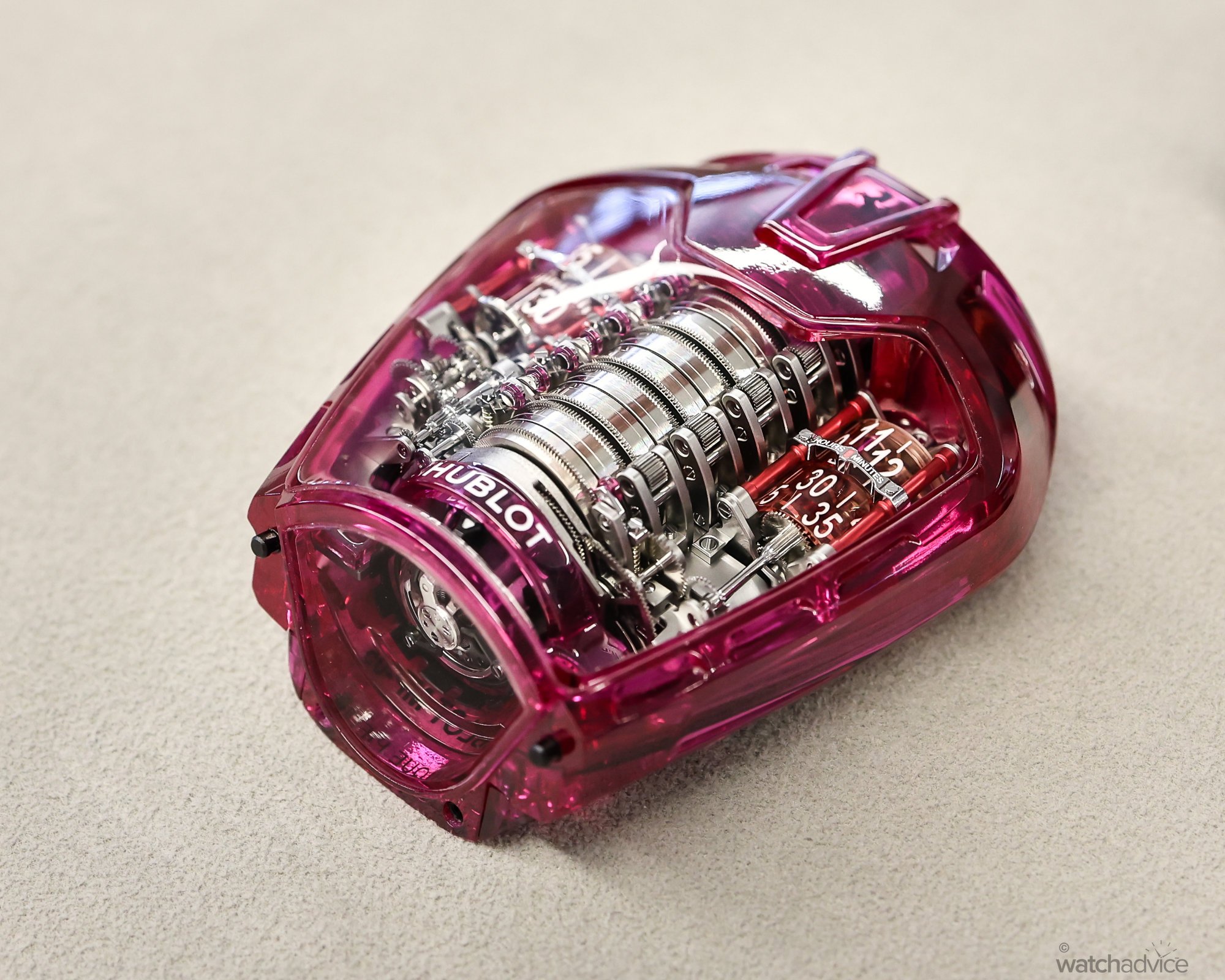
This has become one of Hublot’s most iconic Manufacture Pieces and sought-after watches, given they only made 50 for sale originally, and the popularity of both Ferrari and limited edition pieces from Hublot. The 11 barrels are wound by the specially designed gun, which is inserted at the top of the piece to give the wearer the full 50 days of power.
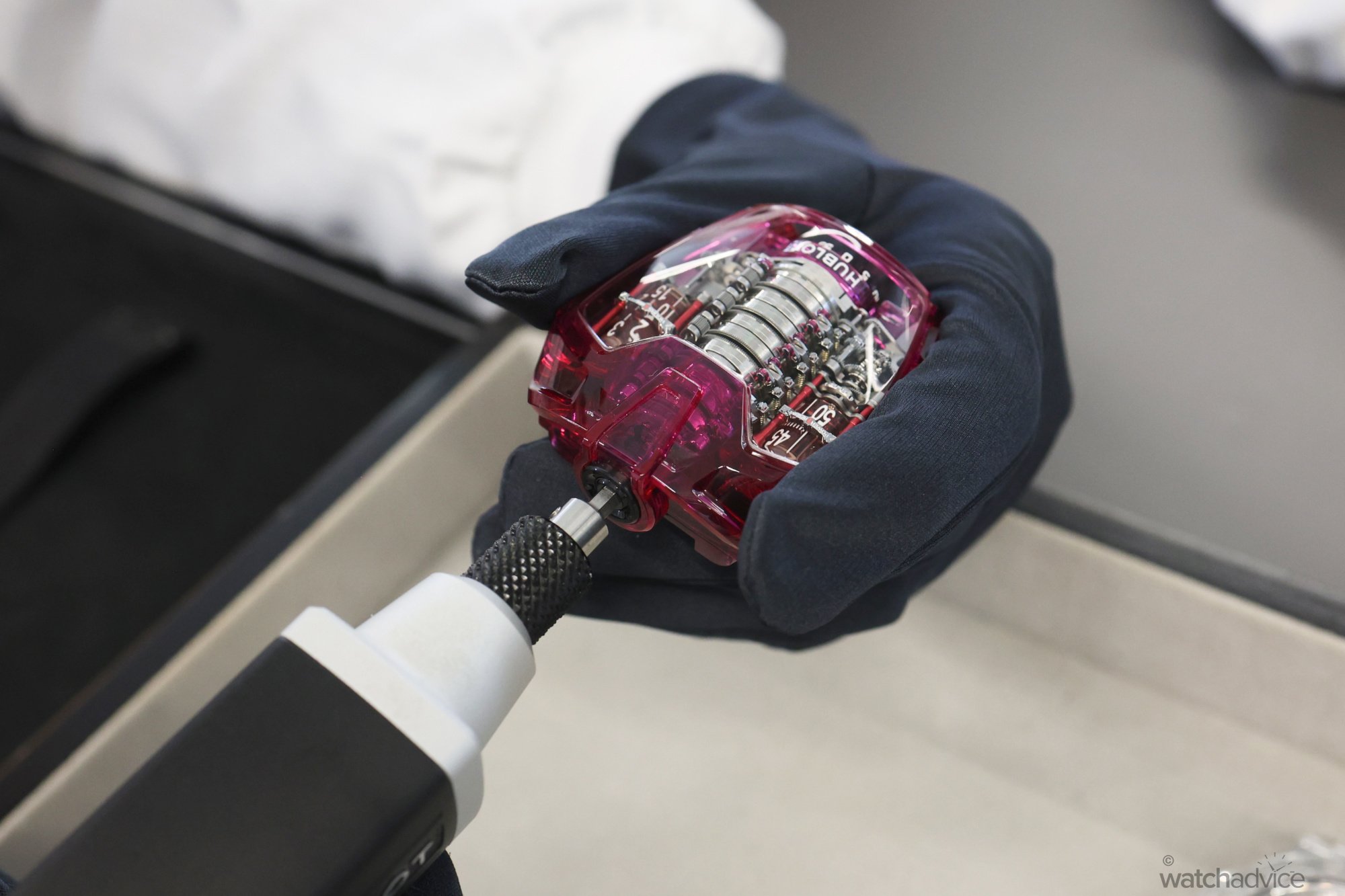
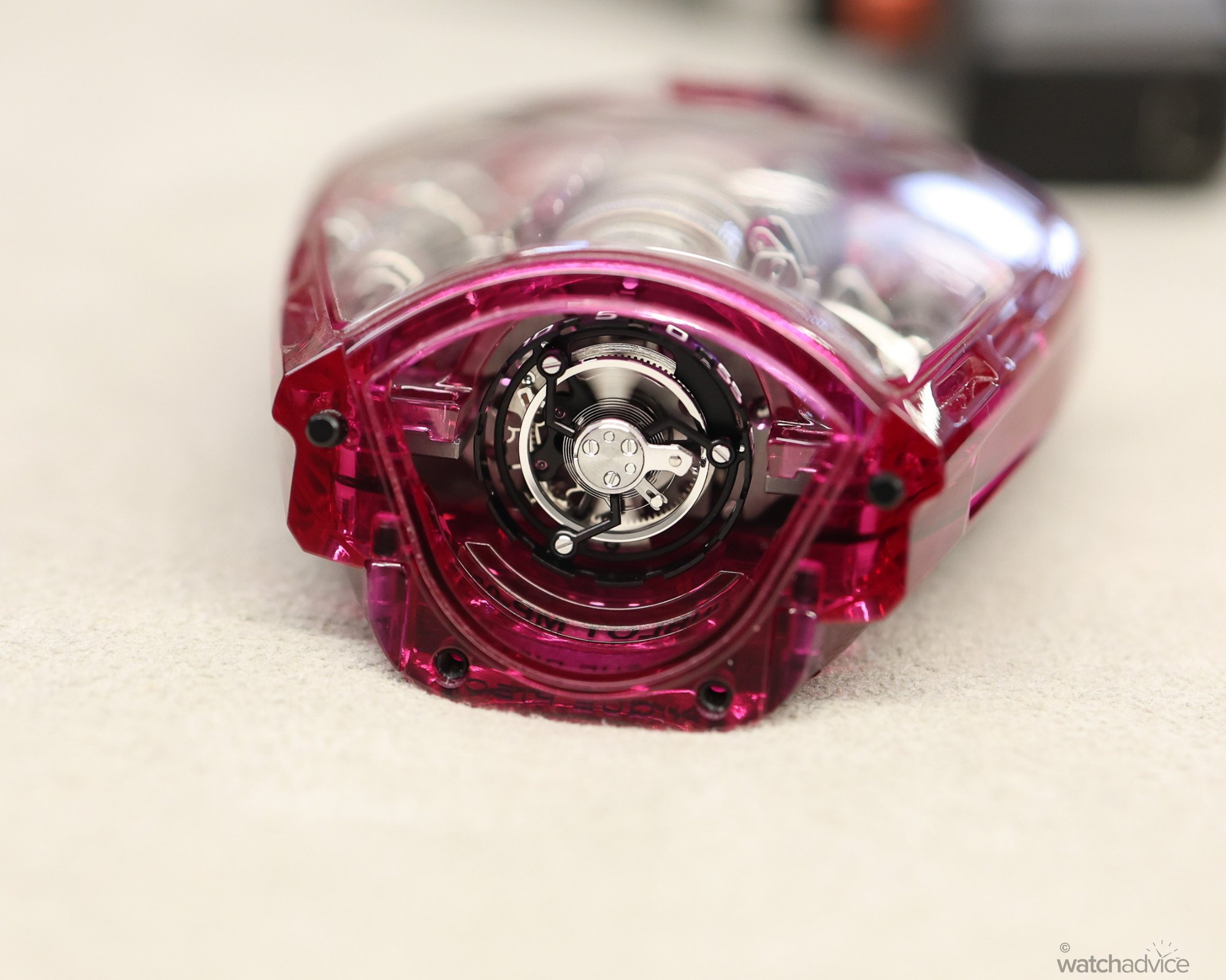
The MP-05 LaFerrari was made with six different colour variants, one being clear sapphire and another which is pictured here, is a red sapphire to evoke the red of the Ferrari itself. This was a groundbreaking movement at the time, and to a point, still is, and is made up of 637 components all up, all working in perfect harmony, just like the LaFerrari’s engine. The case construction, as mentioned, is sapphire, and if you’ve not read our article on Hublot’s Sapphire mastery, then it’s worthwhile to get a sense of how hard it is to make shaped and coloured sapphire, and the skeleton the sapphire is surrounding is comprised of carbon and titanium, keeping the weight down. Just like a Ferrari, this piece is part engineering prowess mixed with design aesthetics to create a fusion of art and science.
Another piece that showcases Hublot’s foray into creative watchmaking is the MP-09 Tourbillon Bi-Axis from 2017. This is a piece that showed a few new innovations from Hublot’s high-complication department, highlighting what can be done when you think a little laterally. A 5-day power reserve with a bi-axis tourbillon, innovative date display, and an ingenious quick date change mechanism. This is a piece that would serve as inspiration for the MP-13, which I’ll look at a little later.
The Hublot MP-09 featured a bi-axis tourbillon, which compared to a standard tourbillon that rotates on one axis, the bi-axis rotates on two axes, helping to offset any effects of gravity on the watch. Hublot decided to put this fully on show by having a crystal that wasn’t fully round, giving it a drop-like, or balloon-like shape that curves down at the end to fully expose the bi-axis tourbillon, exposing the heart of the piece.
Rather than a conventional date function, the MP-09 has a unique retrograde-style date disc under the time display and is shown on 2 arcs rather than one, 1-5 and 16-31, with the date indicated in red. While this is not a retrograde date in the typical sense, where a hand advances around from 1-31 then flicks back at the start of the new month, it’s Hublot’s take on one in their unique way. The other advancement here is the way you can change the date. Hublot has included a quick change date lever on the left side of the watch, so you can easily advance the date forward or backward with the flick of a switch. Gone are the days of cycling a date through the crown here!
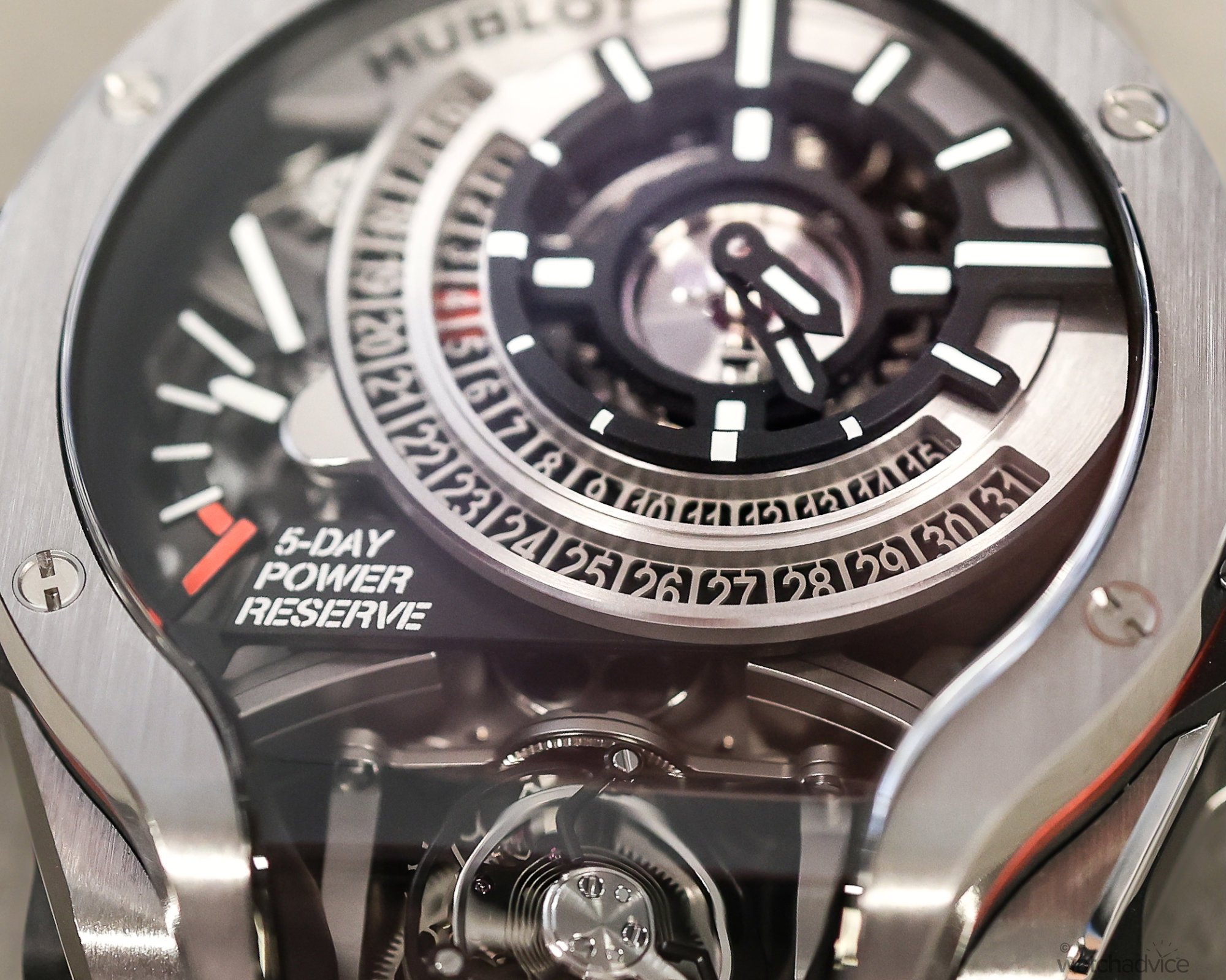

Whilst technically not part of the MP collection, the Classic Fusion Tourbillon Cathedral Minute Repeater is however worth showcasing here, as it is a piece that is quite rare and one that you won’t stumble upon very often. This was a piece that Hublot released in 2014 and was a new Manufacture movement for the brand.

The chiming mechanism is built into the case to enhance the resonance of the sound through the carbon fibre case, which is extremely loud when activated. You can see in the image below the hammers just near the words, “classic fusion” on the case which gives this piece the cathedral sound and when played, does sound like church bells chiming.
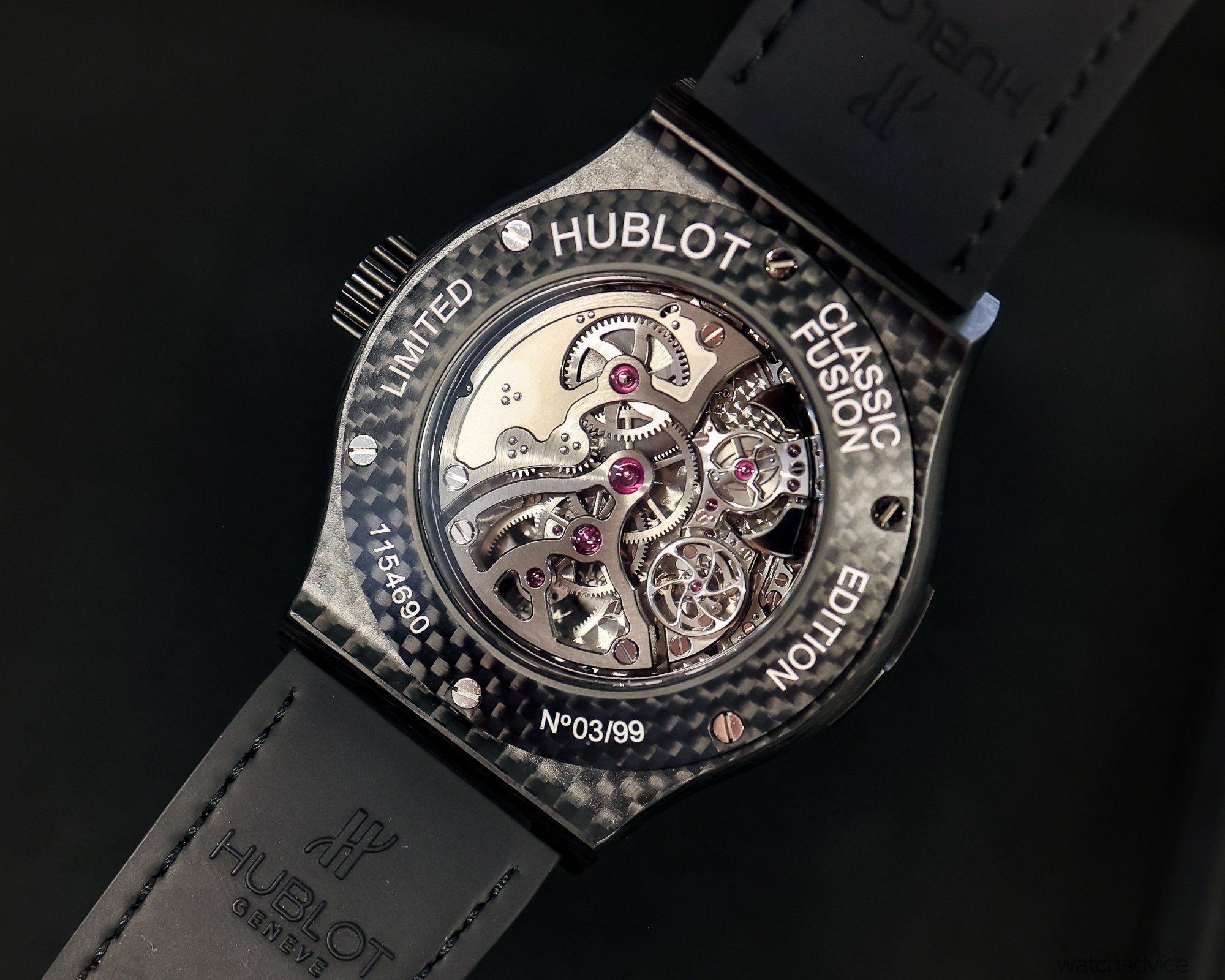
Before we get back into the MP collection with some of the more modern pieces, a watch that Hublot brought out at the start of 2022 was the Big Bang Tourbillon Neon Yellow SAXEM. Housed in a 44mm case, this was another first for Hublot, and the watch industry as a whole. Not satisfied with the results of how the sapphire was made when trying to achieve a yellow colour, Hublot decided to invent their own material to obtain the colour and clarity they wanted. SAXEM, or “Sapphire Aluminium oXide and rare Earth Mineral” is an alloy of aluminium oxide, the basic component of sapphire, with rare earth elements like thulium and holmium, as well as chromium. The resulting material is ultra-resistant and endowed with a brilliance that is greater than that of sapphire.
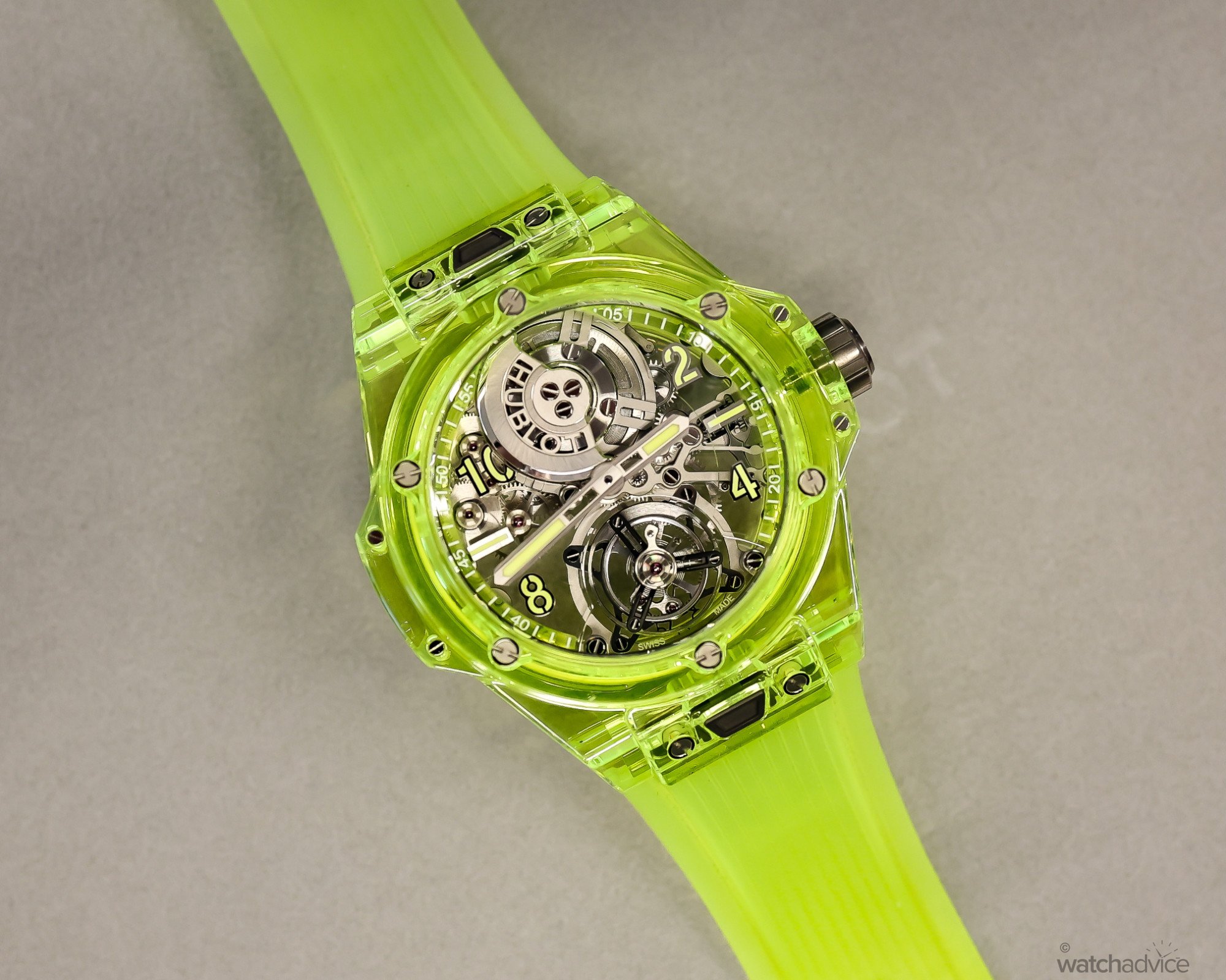
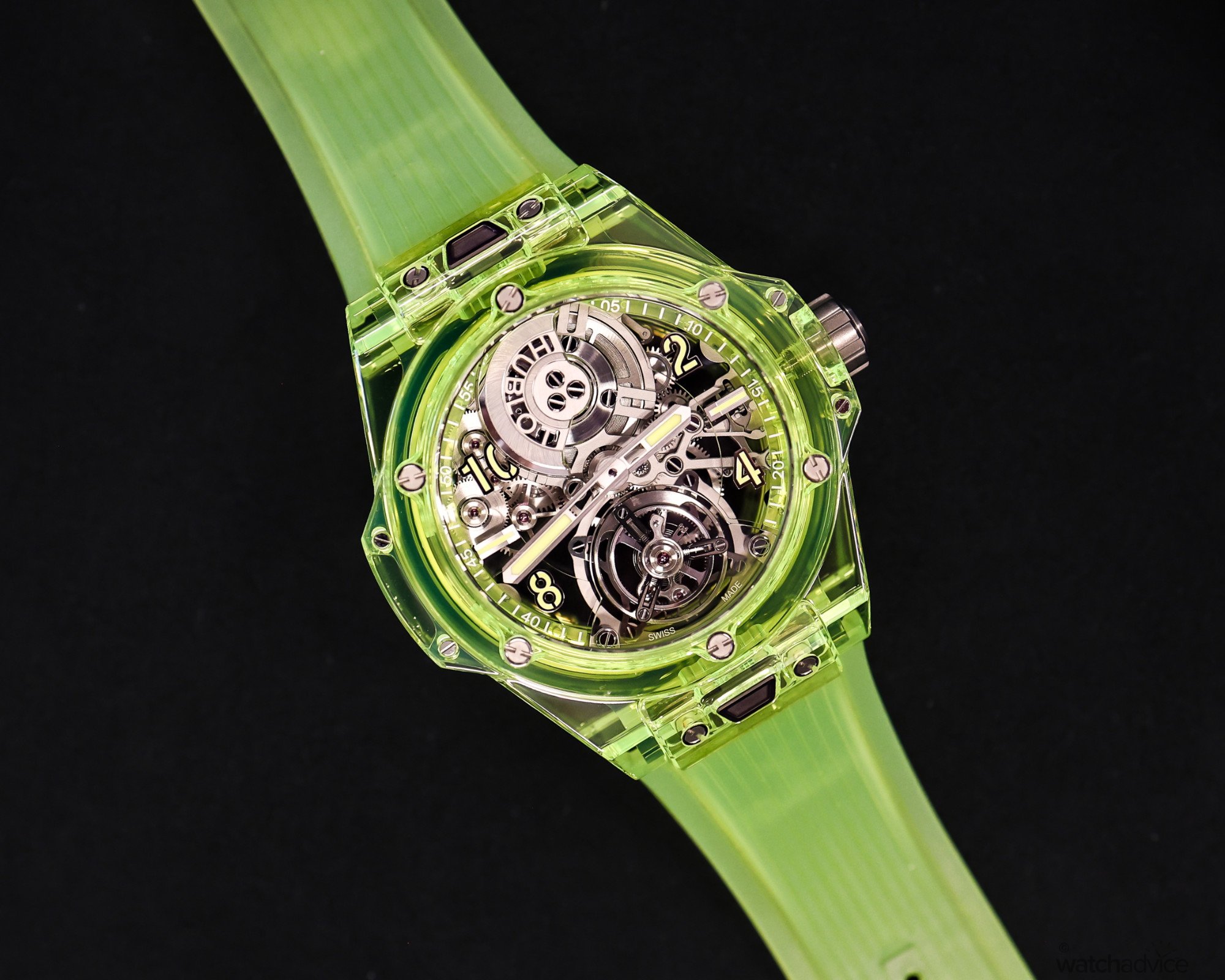
Inside this is the Hublot-manufactured HUB6035 automatic tourbillon with a 72-hour power reserve. What makes this movement special are a few things. The first is it is a fully skeletonised movement in the true sense, not open-worked. You can see through the entire movement thanks to how Hublot has designed this, with a sapphire crystal dial that allows the numerals and hands to ‘float’ above the movement.
RELATED READING: Hublot Unveils The Big Bang Unico Green SAXEM
The second is the micro-rotor at 12 o’clock and on the dial side, making this somewhat unique in the world of automatic watches for both the position at 12 o’clock not to mention this has been placed on top of the barrel, whereas other traditional movements would have these separate.

This was a piece that was about three years in development due to the complexity of the colour. Sapphire is not easy to work with at the best of times, and when you add in a proprietary material mix to come up with the neon yellow, according to Ricardo Guadalupe, former Hublot CEO and now Honorary President, you just exponentially increase the R&D time as well as costs. This is one reason pieces like this are limited to just 50 and cost A$328,000 as the costs and resources required to produce a watch like this just don’t scale at all.
The Modern MP Collection
In recent years, Hublot has both refined several of its iconic pieces as well as taken strides in material and movement development. First up, the MP-11, which was originally released in 2018 with several material iterations in carbon and clear sapphire and later in a bright red ceramic. Hublot followed this up when they released a new colour variant this year in the Water Blue. A new colourway may not sound much, but to produce the Water Blue colour, again like the SAXEM, a result of several years of development to get it exactly right.
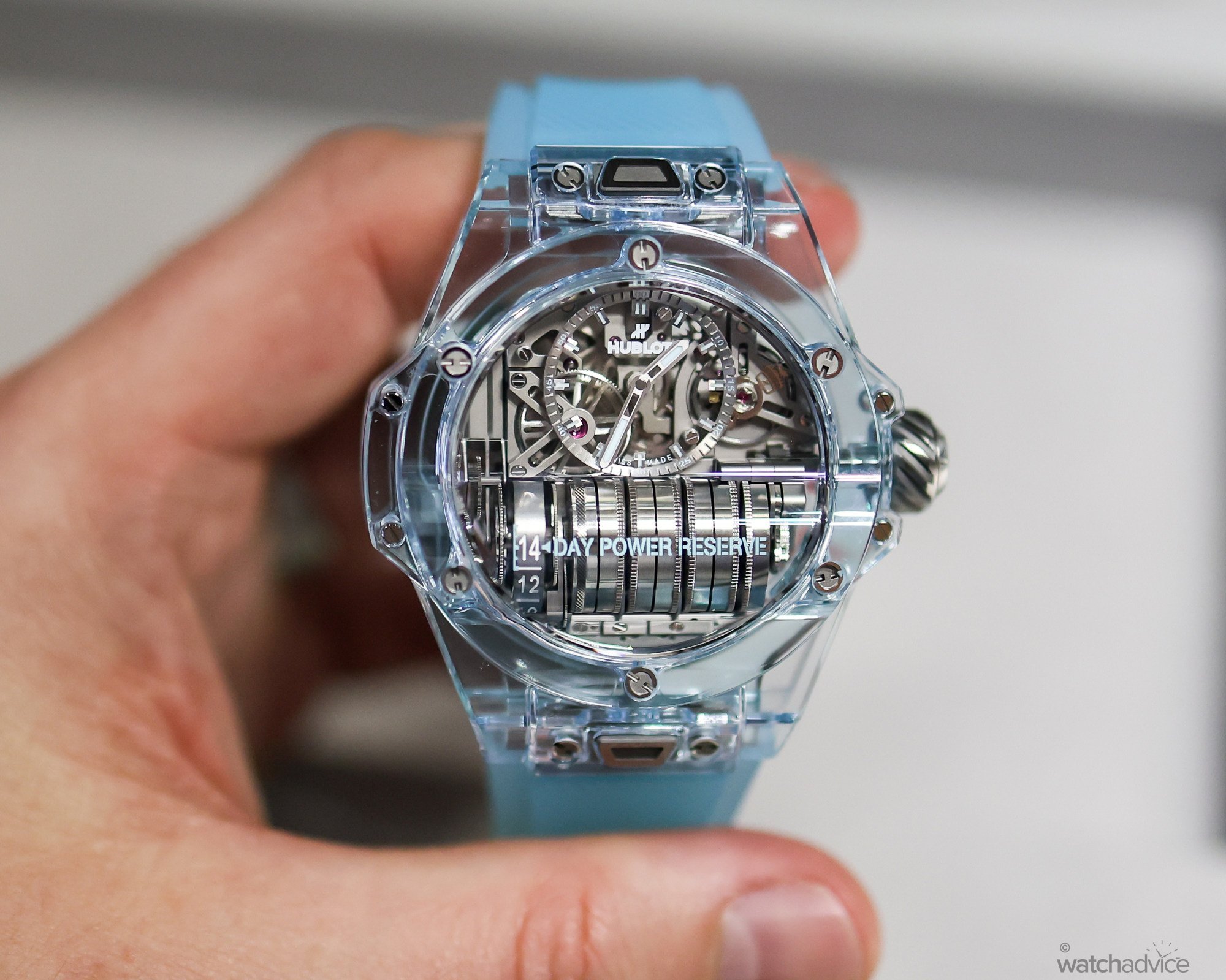
The MP-11 was yet another innovation in 2018 not just the case, but the movement. Taking inspiration from previous models, as well as the learnings, Hublot came up with a new movement for the Big Bang, the HUB9011 Manufacture manual winding calibre, skeletonised and featuring a 14-day power reserve coming from the series of seven coupled barrels.
Hublot has designed the movement and case to keep the watch very wearable, with the barrels sitting under the main part of the movement and dial, it allows for the case to keep within an acceptable 14.4mm thickness. The arrangement of the barrels also means the movement can be skeletonised, adding to the aesthetics along with a 14-day power reserve indicator to the left of the barrels.
Before the MP-11, there was the MP-10 Tourbillon Weight Energy System Titanium. However, due to the complexity of this piece, Hublot wouldn’t release this until LVMH Watch Week 2024 – a full five years after the intended release. When you get this piece in your hands, you understand why this took so long to come out as well as winning the 2024 Red Dot Award for innovation, as it is nothing like any other watch on the market today. This is Hublot showing off their innovation and engineering skills to their fullest ability.
As you can see, the watch is not your conventional piece. Constructed out of sapphire and titanium, and shaped like an engine, it has no dial, no hands and no oscillating weight. This piece takes parts of other MP watches, like the MP-05 LaFerrari, and the MP-07, and blends this with a completely new energy system in the two weights on either side of the watch that slide back and forth to generate power.
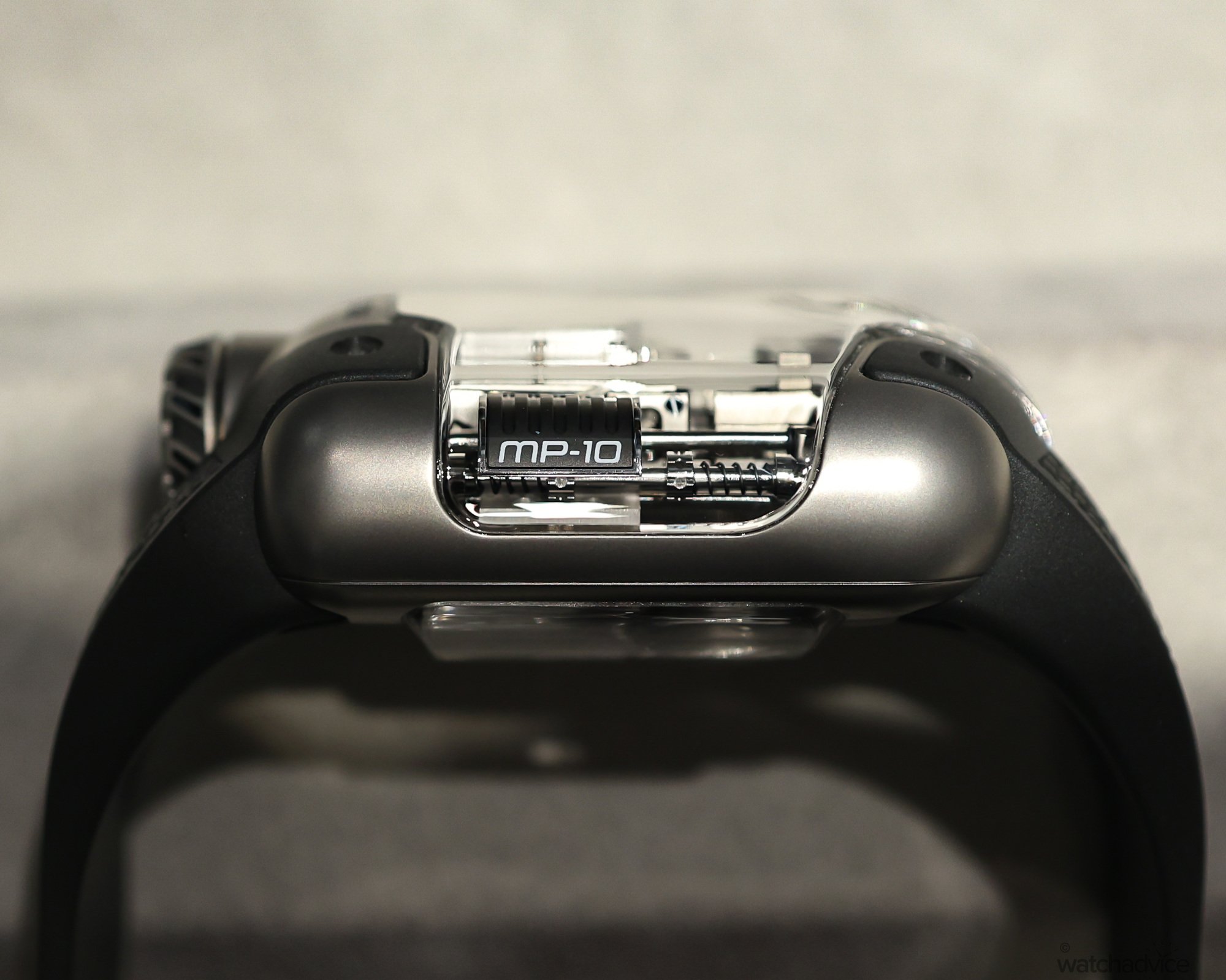
The time display is done in the vertical form with cylinders to tell the time, a little like the LaFerrari. Two cylinders are stacked on top of each other with hours and minutes with a curved magnifier to make the numerals easier to read. On the wrist, it makes it that little bit easier at a glance.
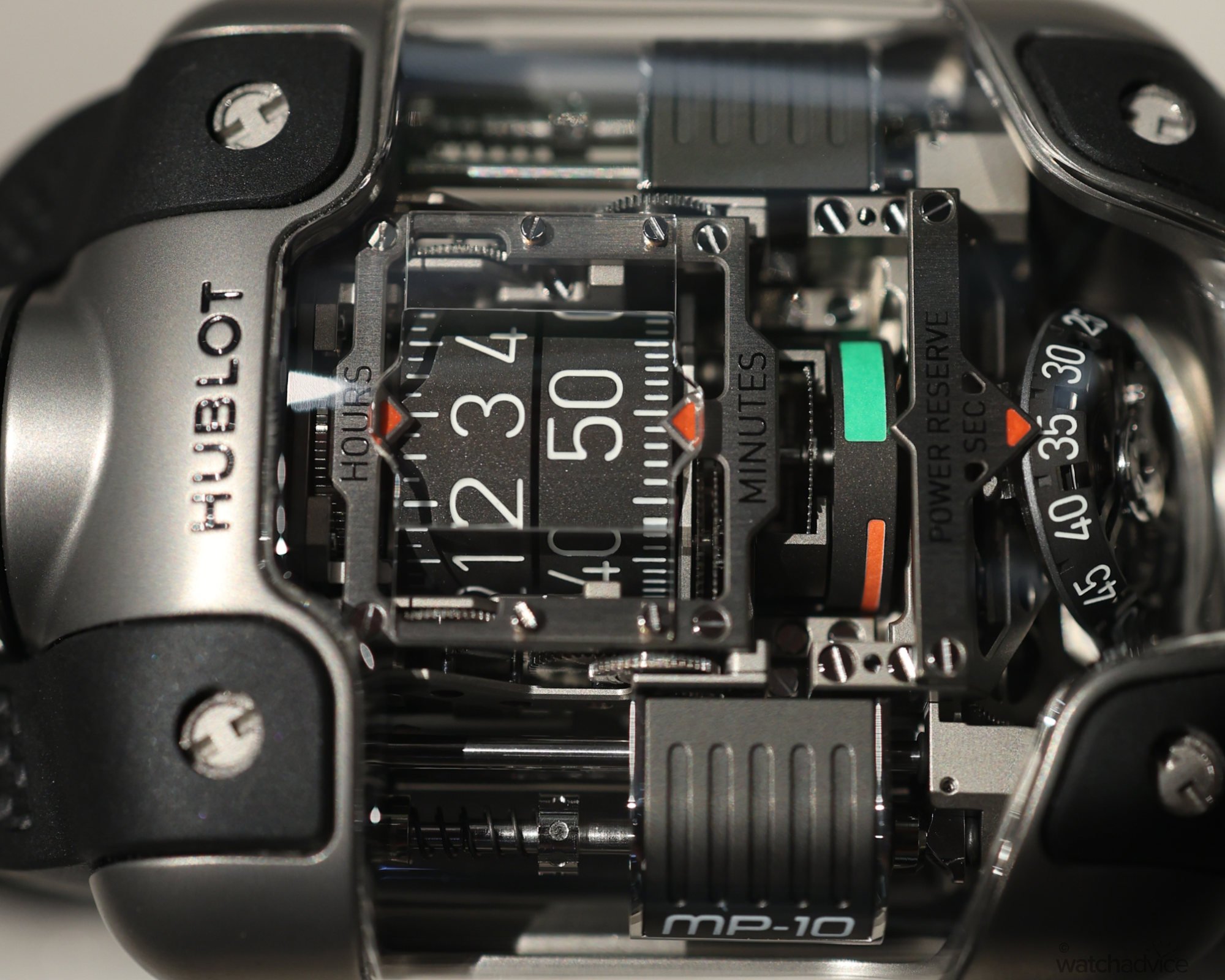

The sapphire and titanium case are totally unique, designed to house the movement and display as much as possible, and this in itself was a feat due to the odd shape the sapphire needed to be on both the front and the caseback. Curving angles on each side, with a window to display the vertical tourbillon that also acts as the small seconds display allow for maximum visibility on the front, on the back, the window gives you a glimpse into the underside of the movement, and the spring loaded “crown” allows you to set the time easily.


The MP-10 is a showcase of what is possible if you’re not constrained by convention, as this is probably as far from convention as you can get. Nonetheless, it’s a testament to Hublot’s drive to create the unique and new!
RELATED READING: Peeking Behind The Curtains Of Hublot At Their Nyon Manufacture
The MP-13 came out in 2023 and was a derivation of the MP-09 Tourbillon Bi-Axis from 6 years earlier. This time, Hublot took the concept and changed a few things to make a new piece with a full retrograde time display – both hours and minutes which again, went against the norms of most retrograde watches.
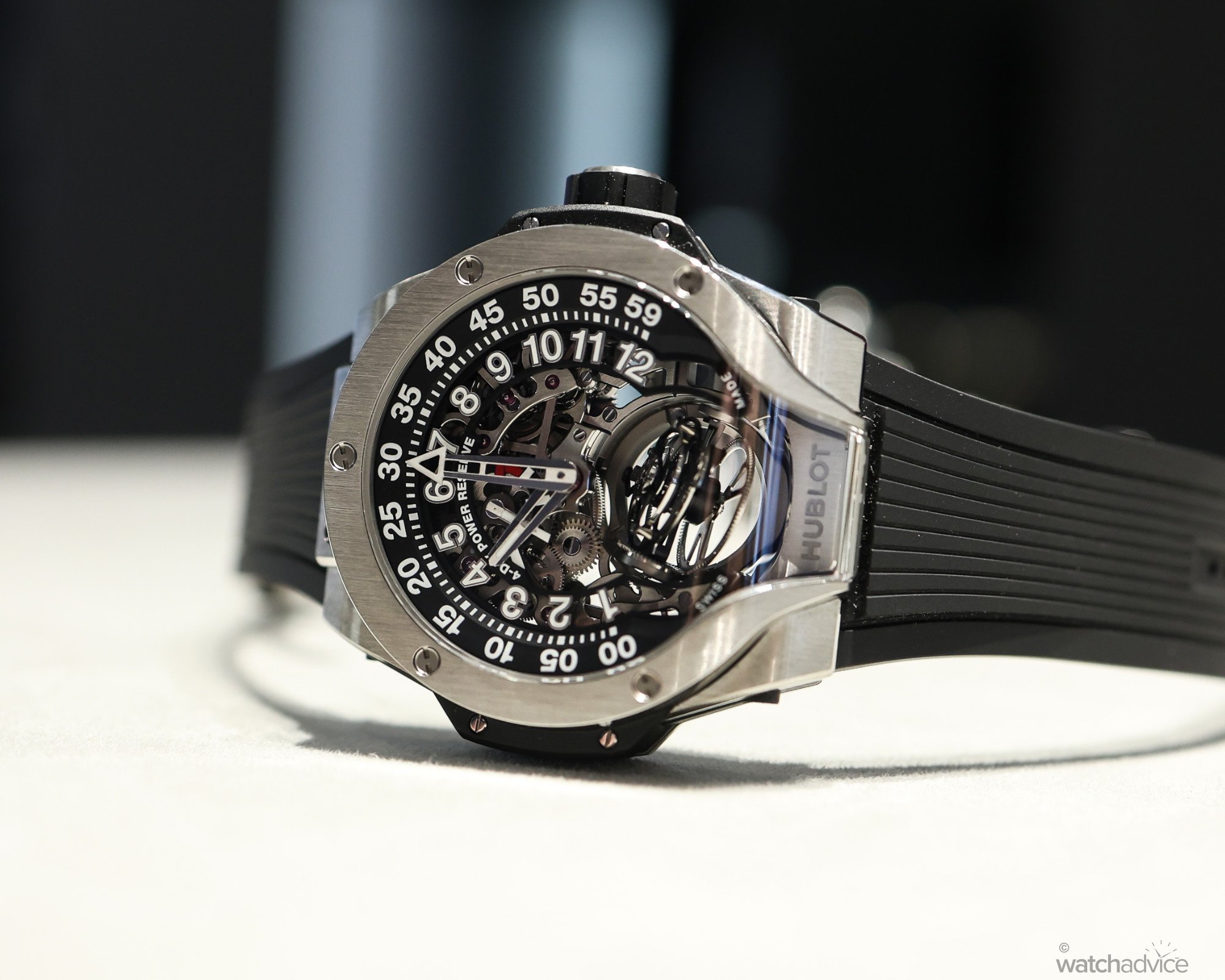
Here you will see similarities to the MP-09, but Hublot has simplified the dial (sort of) with a pure retrograde hours and minutes arc, which if you’re familiar with retrograde functions, are cool to see when the hand flick back to the start instantly. All that is needed here now is a retrograde seconds, how cool would that be? The Bi-axis tourbillon spins at the traditional 6 o’clock position and to keep the watch perfectly wearable, Hublot has shaped the sapphire on the back to include a “bubble” that allows the depth of the tourbillon with the case.
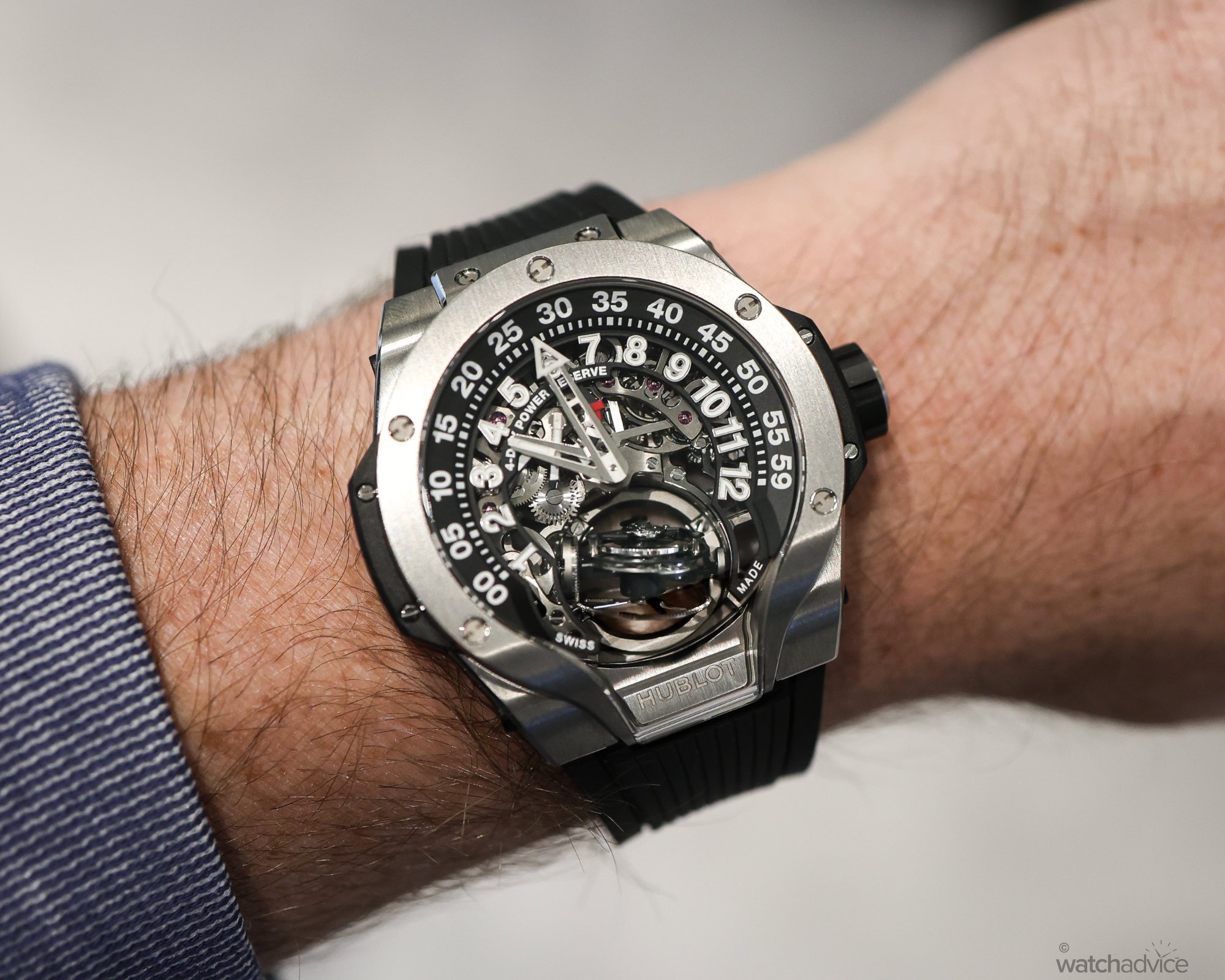

2023 seemed to be a year for the MP collection as in the same year Hublot teamed up once again with Japanese Artist, Takashi Murakami to create the MP-15 – a full sapphire crystal case in the shape of the Smiling Flower which is Takashi Murakami’s hallmark. There we several feats here on display, not the least the flower-shaped crystal case.
Hublot used their in-house Unico Calibre HUB9015 Manual-Winding Tourbillon. To accommodate the floral sapphire case shape, the HUB9015 is a central tourbillon which can be seen through the wide smile of the flower, and to tell the time, two peripheral hands that float above the “dial”. Once fully wound, the MP-15 has a full five days of power, which when you flip the watch over, comes from the two barrels that sit side by side. The brides are skeletonised as well to ensure the case is filled with light, one of the appeals of this piece.
Now this was a piece for the connoisseurs of Hublot and Takashi Murakami, those who have a lot of pieces in their collection, and want something totally different. For the A$492,000 and 50 pieces worldwide, it ensured that only those with a love for the brand and Murakami, plus some deep pockets would truly have something special.
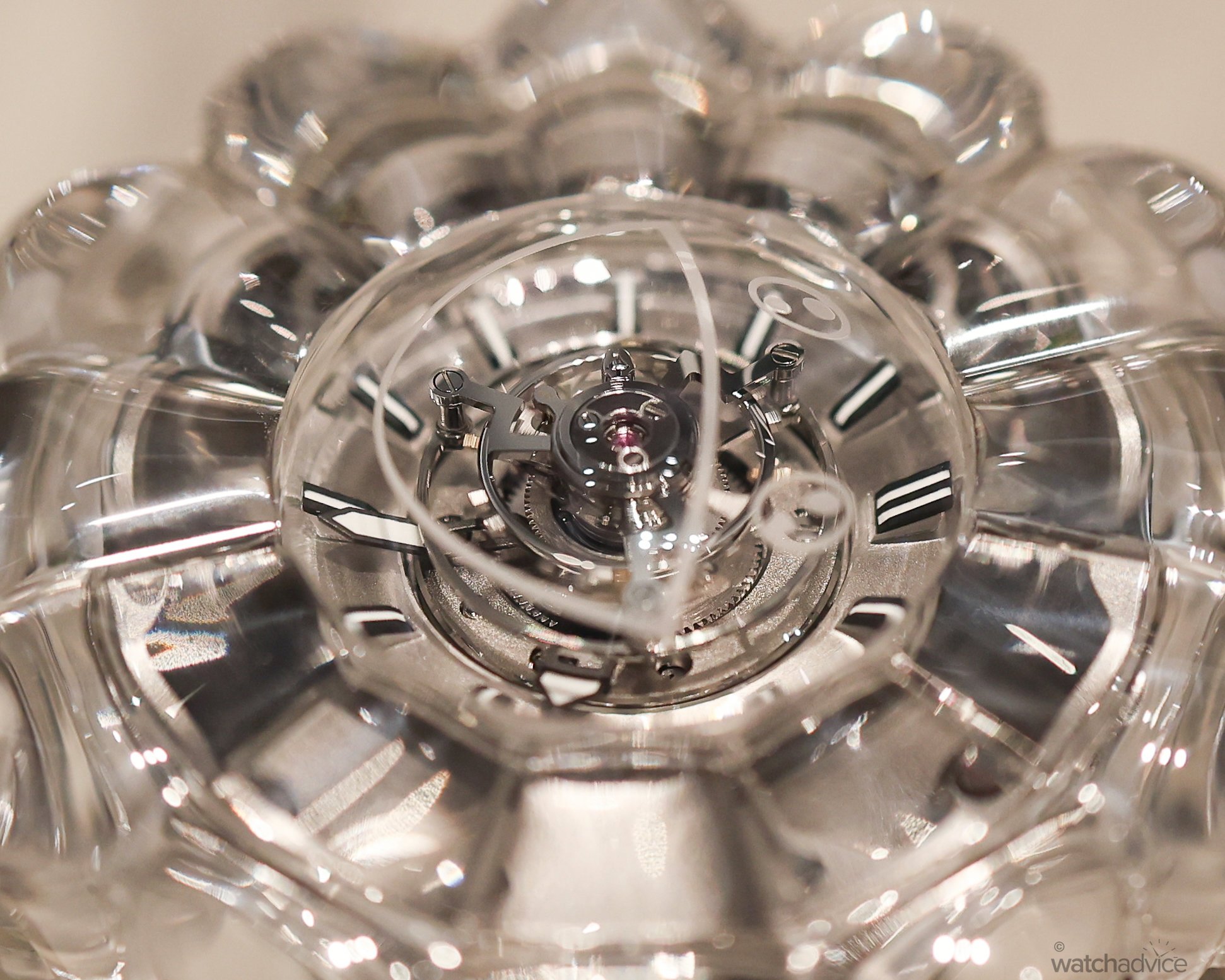
This leads us to the latest watch from Hublot’s MP collection, the MP-16 Arsham Droplet. Now I had the pleasure of going hands on with this, and earlier this month wrote a review on the piece. It’s a different kind of MP for Hublot in the fact this is not a wristwatch, but a three-in-one: Pocket watch, pendant watch and desk clock and thanks to the design, can be converted at the click of a button using Hublot’s One-Click system.
The movement in the Arsham Droplet isn’t new, but uses the Meca-10 which is found in the Big Bang and Spirit of Big Bang Meca-10 models. For those not familiar with the Meca-10, I go in-depth into the movement in my review of the Big Bang Meca-10 Ceramic Blue, as well as our Watch Education article on the movements of Hublot. But to cut a long story short, the movement was inspired by Meccano sets which were popular in the late 80s and 90s, a sort of more mechanical Lego Technic and made from steel.
The MP-176 Arsham Droplet is made from a full sapphire case in the shape of a water drop, and inside, a skeleton of titanium that anchors the two sides of the sapphire in place, along with the Meca-10 movement. Daniel Arsham’s “Arsham Green” has been used throughout the piece, on the dial and on the rubber bumper that acts as a grip for the watch. On the flip side, the double “A” logo of Daniel Arsham sits on the sapphire over the Meca-10 movement.
As said, it’s not your typical watch, but Daniel Arsham’s interpretation of a pocket watch for the modern watch enthusiast. I did say in my review that this was a relatively versatile “non-wristwatch” watch, purely for the fact that you can wear it, put it in your pocket or have it pride in place on the mantle or desk, which is how I would most probably have it should I own such a piece.

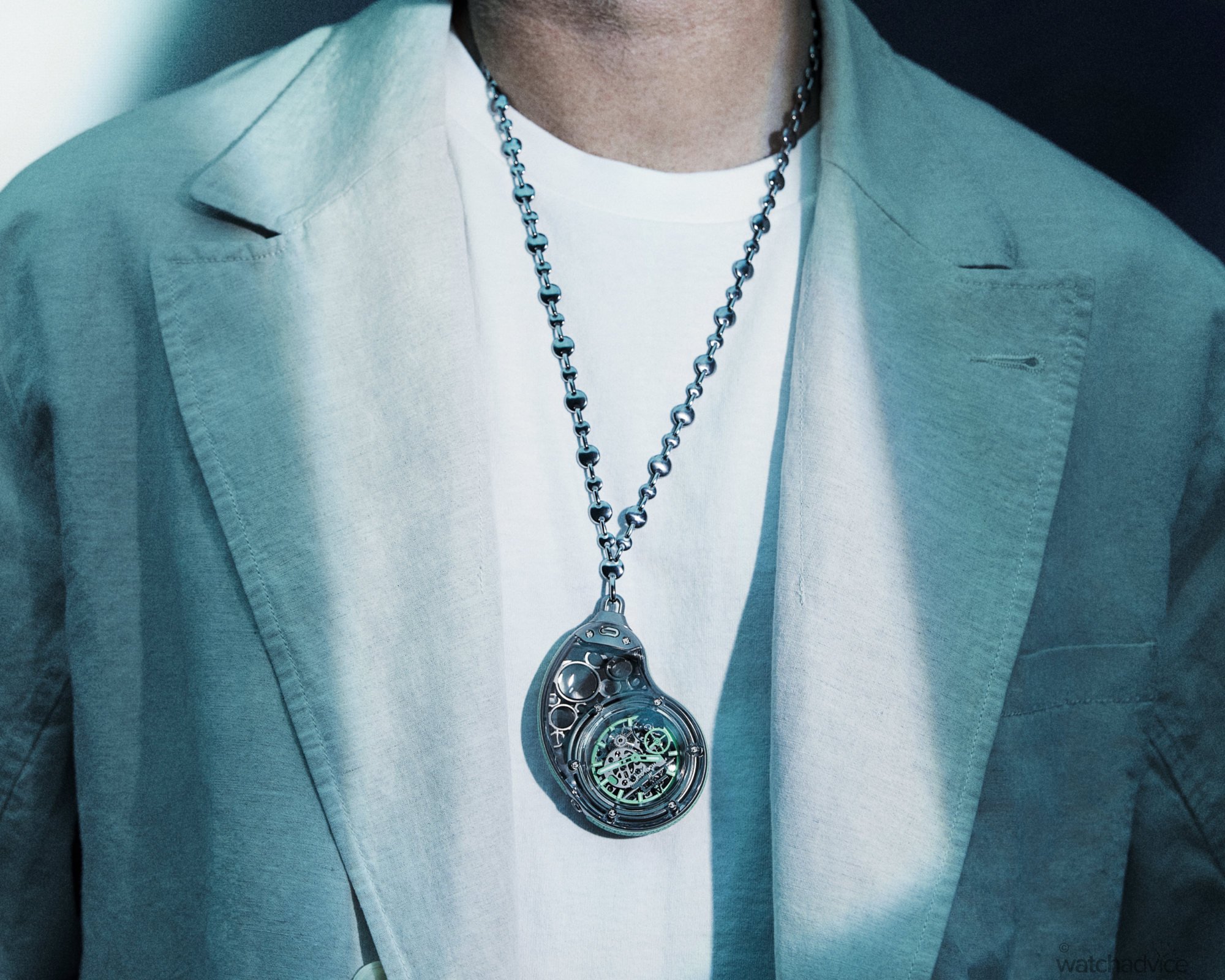
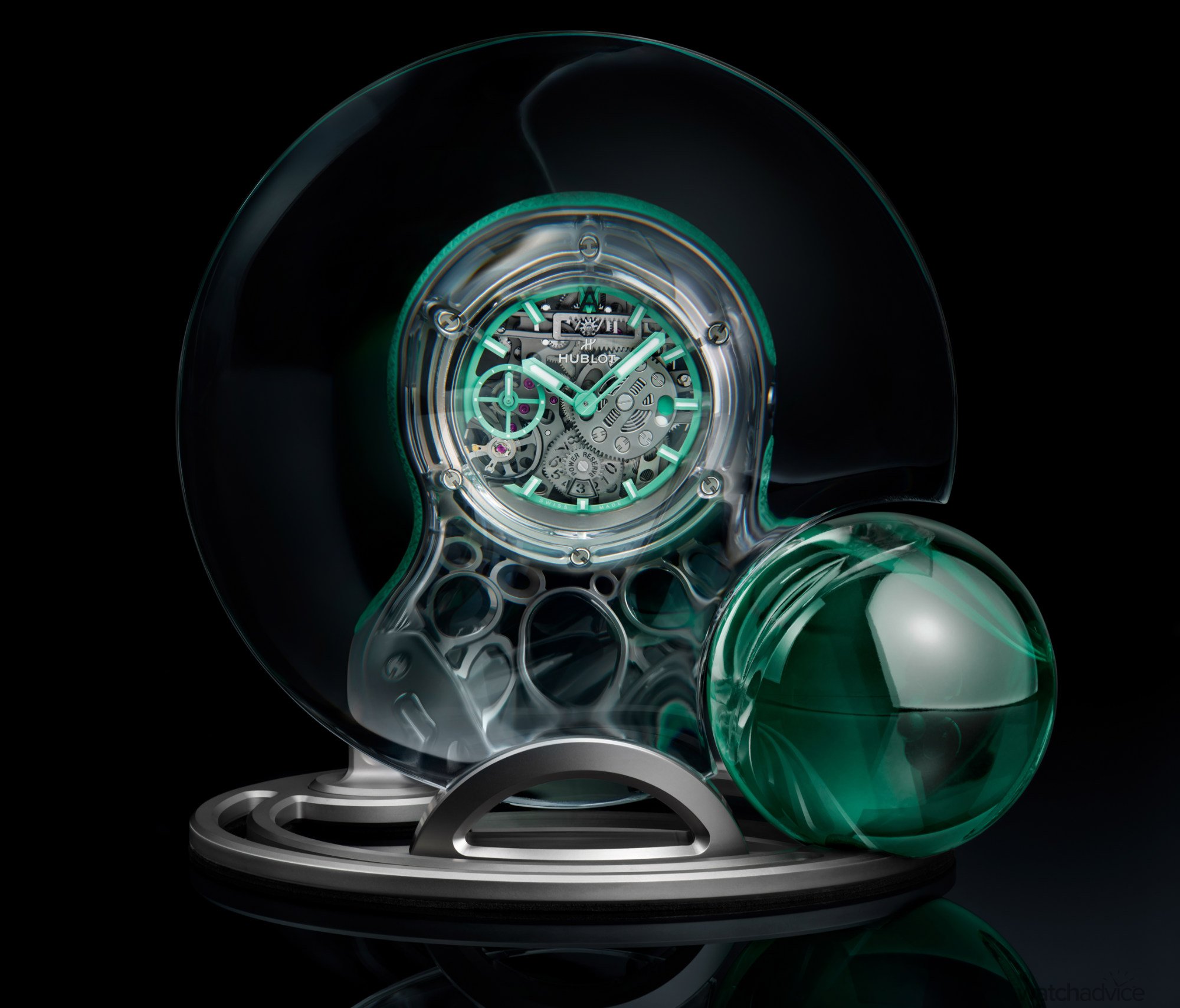
I also mentioned in my review that, and I quote “The price point will also make most of us think twice about it – at A$132,000 it’s definitely a piece for those who have means, and by virtue of the watch itself, as well as the price, it will be a piece for collectors who are looking for something new that is nothing like they have in their current collection“. And I feel this sums up this piece well, and for the most part, the entire range of Hublot Manufacture Pieces!
RELATED READING: In Person with Ricardo Guadalupe, Former CEO & Honourary President Of Hublot
The last piece I wanted to draw attention to isn’t part of the MP collection per se, but it is actually one of my personal favourites. The Spirit of Big Bang Tourbillon Carbon. This is a watch that Hublot released in 2019, originally in a black and blue carbon case, which you can see below. Since then, Hublot has released this is several new variants, including a sky blue and most recently at Watches & Wonders 2024, an Orange Carbon.
The Spirit of Big Bang isn’t what makes this piece special, but rather the movement. Using Hublot’s fully skeletonised manual winding HUB6020 tourbillon calibre, it has a 5-day power reserve from a single barrel and the way they make this movement is something I’ve seen personally and makes you appreciate the detail that goes into it.
This movement is created and put together in-house at Hublot’s manufacture in Nyon, just outside of Geneva. The skeletonised bridges are made through a process called Spark Erosion which uses a process of running an electrical current through very fine wires in an electrical conducive solution that creates a spark and cuts the metal, ensuring a level of accuracy that human hands can’t achieve on this particular movement.
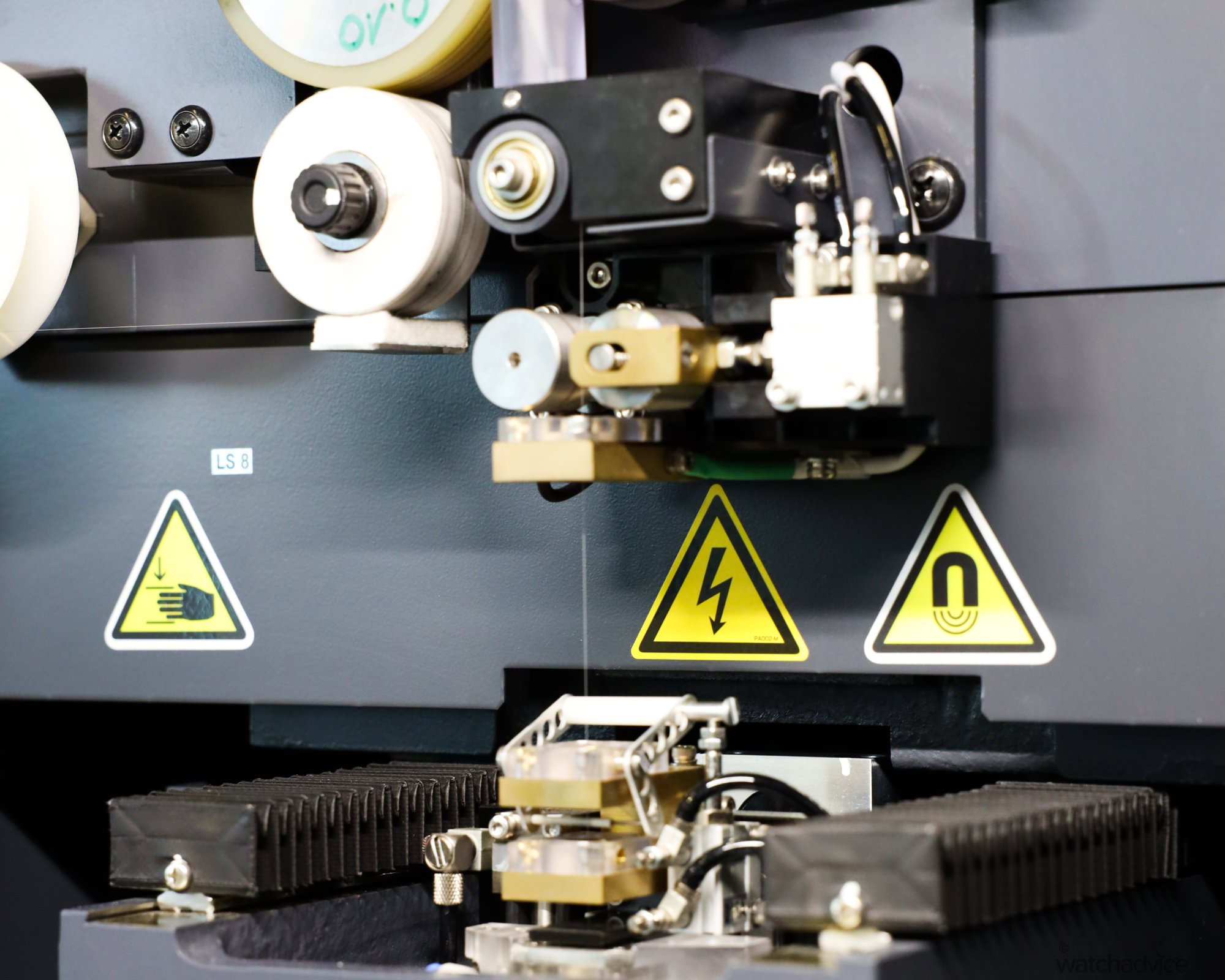


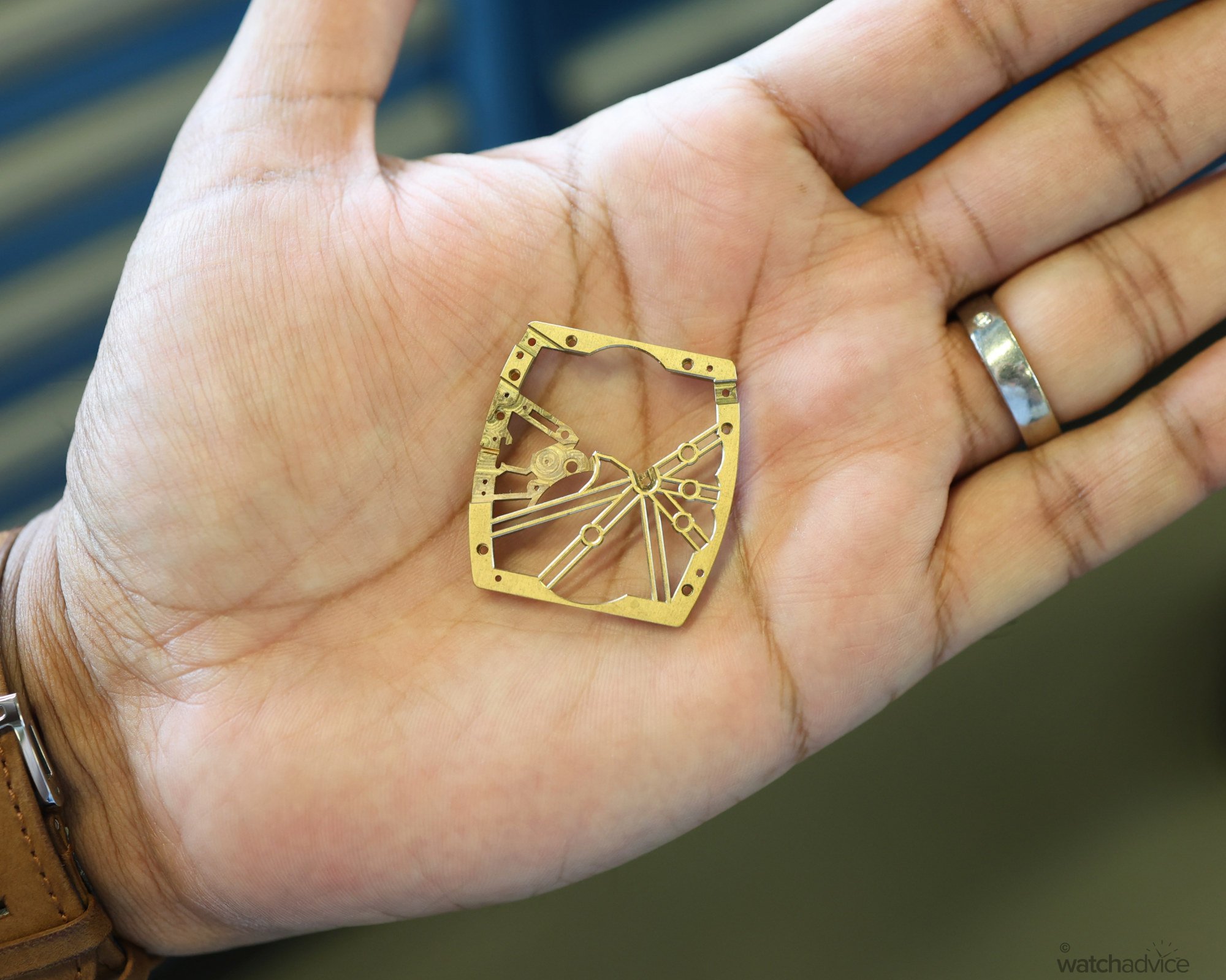
On the wrist, it’s a joy to wear too, being ultra-light and form-fitting thanks to the curvature of the tonneau case and rubber strap. On my 17.5cm wrist below, it fits really well, and one of those pieces that I could see being in my collection should I have the financial means to do so.

While we could go on and cover all of Hublot’s Manufacture Pieces, that may have to be another article for another day, but looking back over the last year, and having got our hands on quite a number of their MP collections, I, and the rest of the Watch Advice team can safely say that this is where Hublot really shines. Just like other industries such as automotive, houses, jewellery etc, the more a brand does at the very top end, the more the standard models benefit through experimentation, innovation and implementation. If you’re driving a modern car today, the chances are the technology in it has come from the high-end models, the prototypes, and motorsport versions that over a few years get funnelled down as cost efficiencies and scalability improve.
The same goes for the watch world, and by Hublot innovating and experimenting with what is possible in the Manufacture Pieces, as time goes by and Hublot’s capabilities grow, their standard collections will ultimately benefit. When we spoke with Samuel Morel, Hublot’s Chief Production and Quality Officer, he reiterated this; the work on new and innovative movements and materials eventually find their way into the rest of the collections, and with a new facility opening up in Nyon to create Hublot’s third building, I can only see this getting better with more in-house capabilities and more in-house calibres being made in the future.



